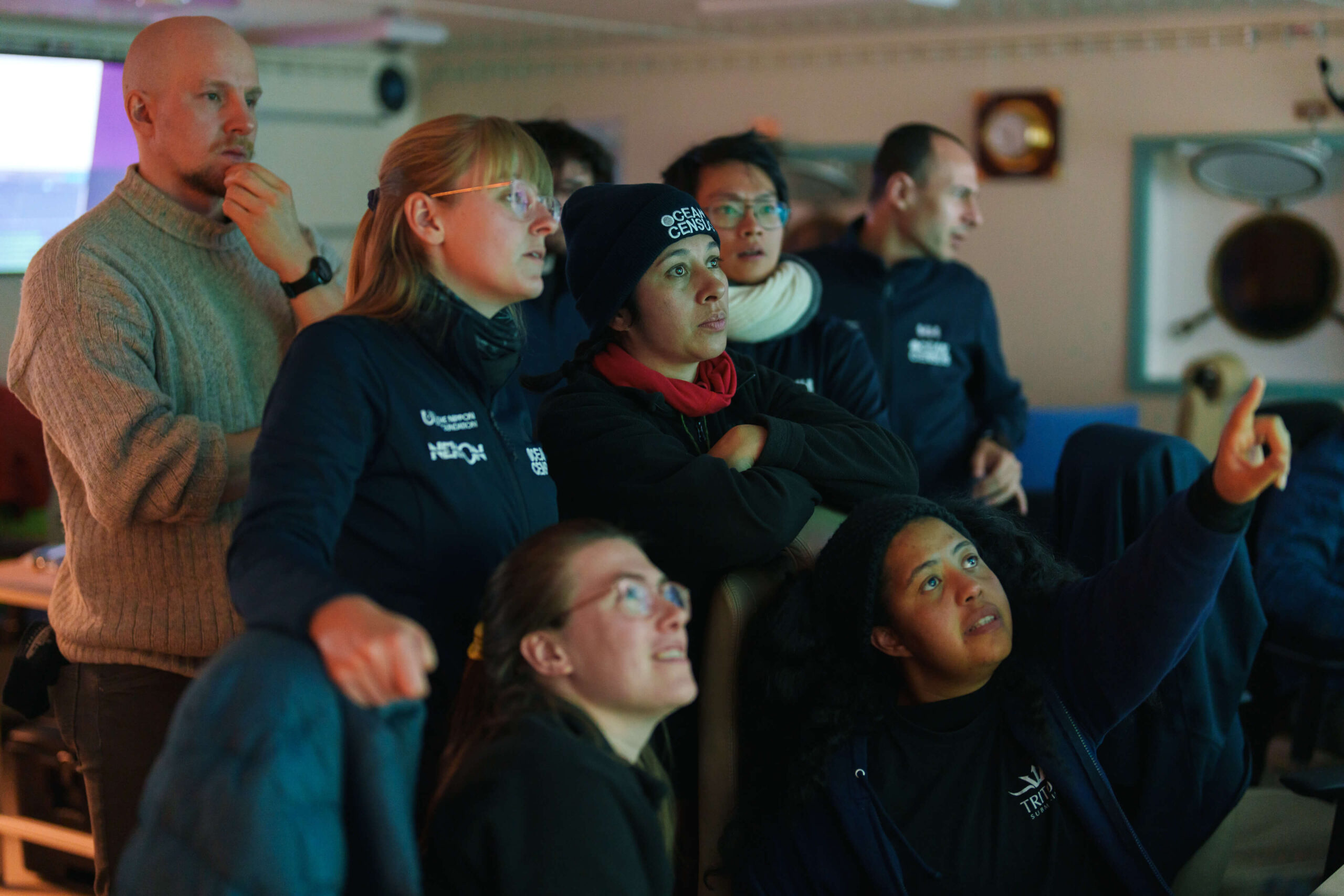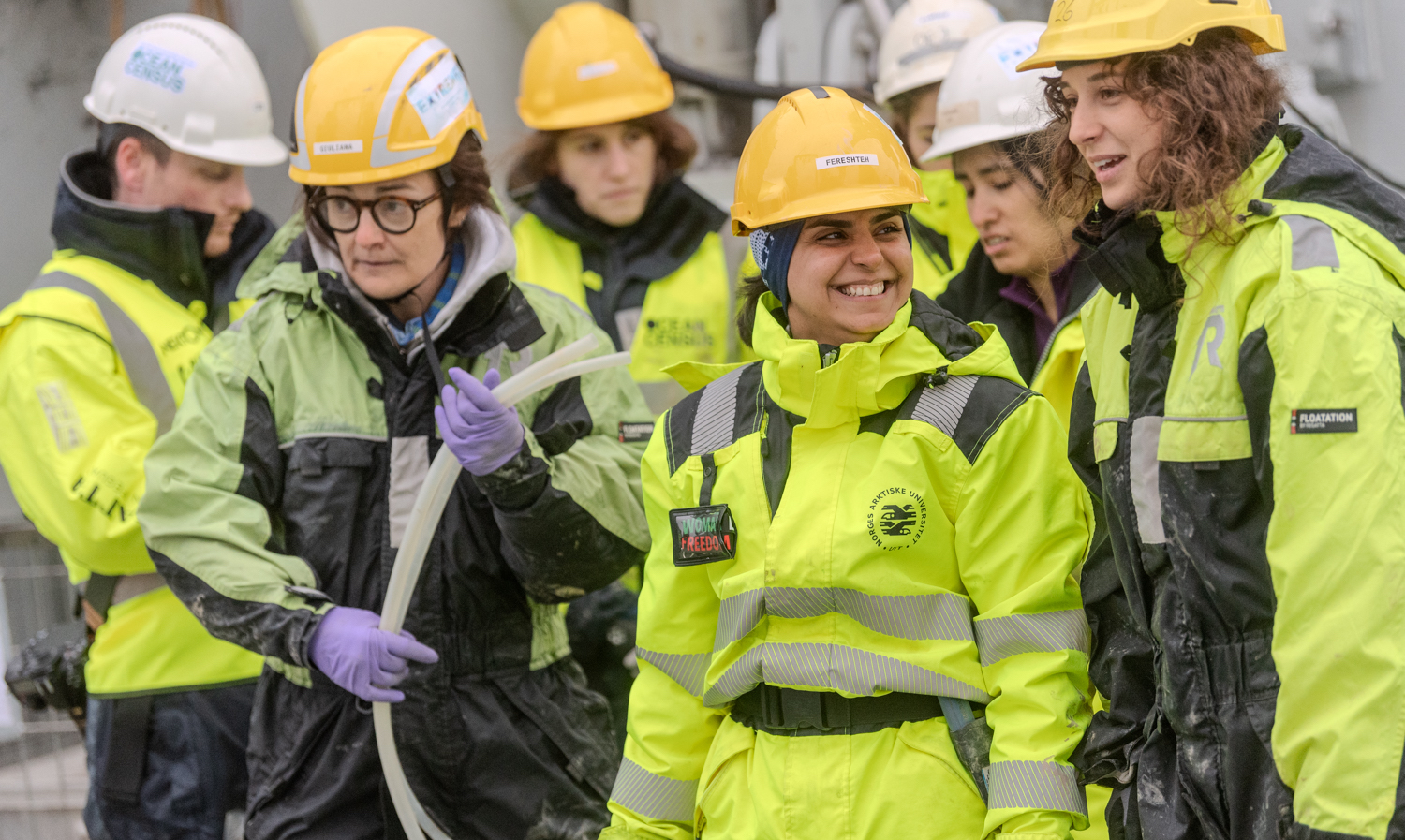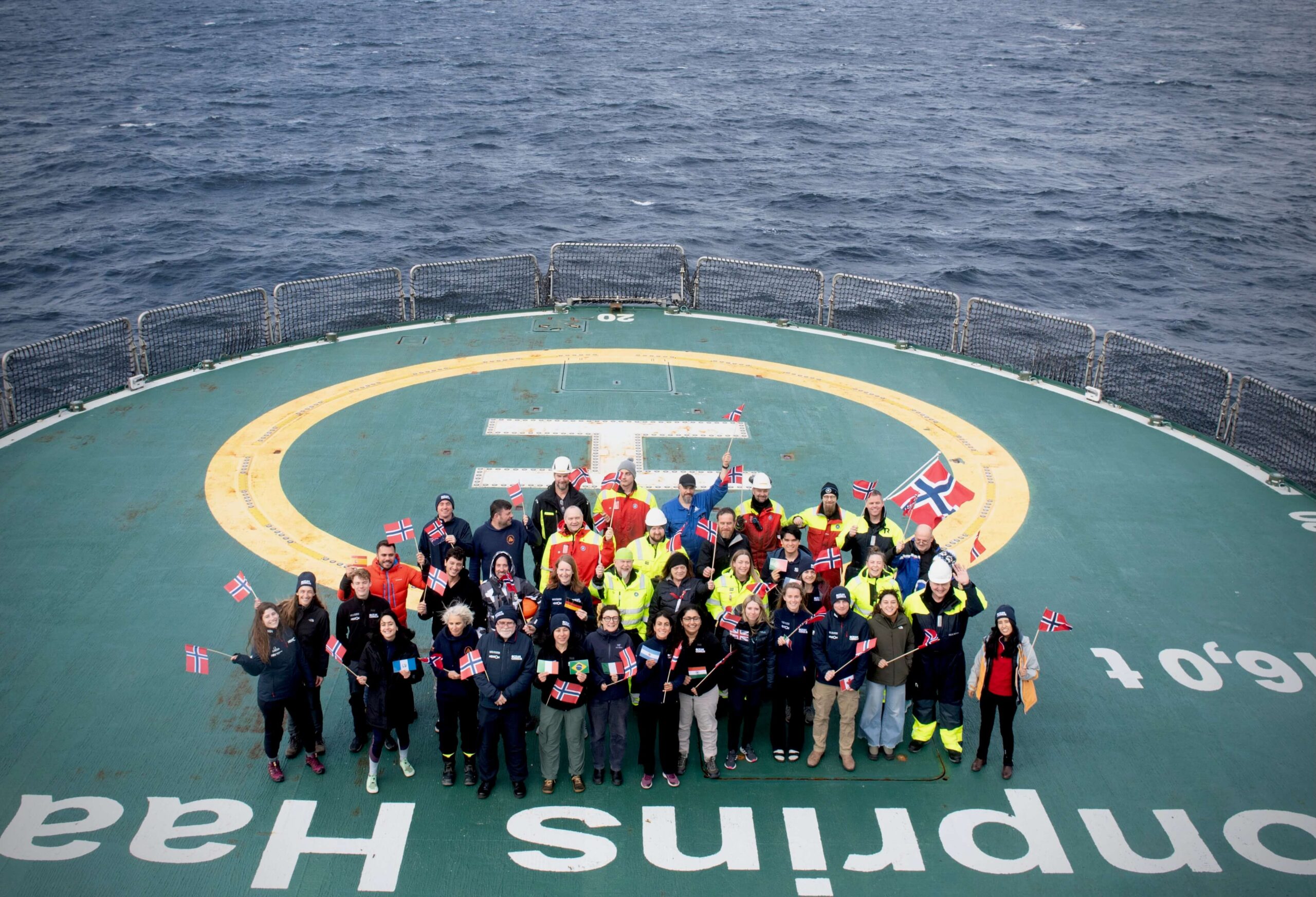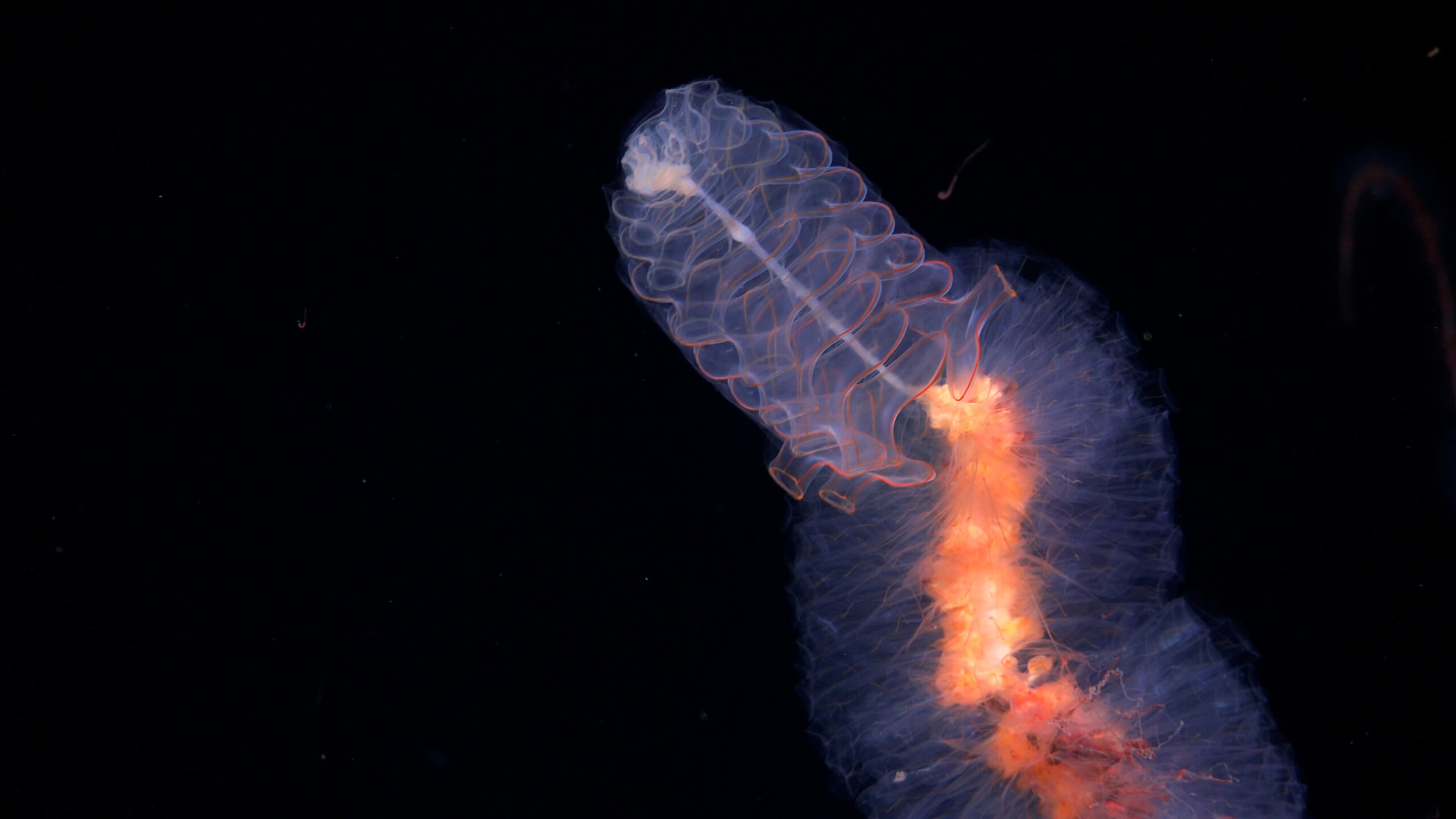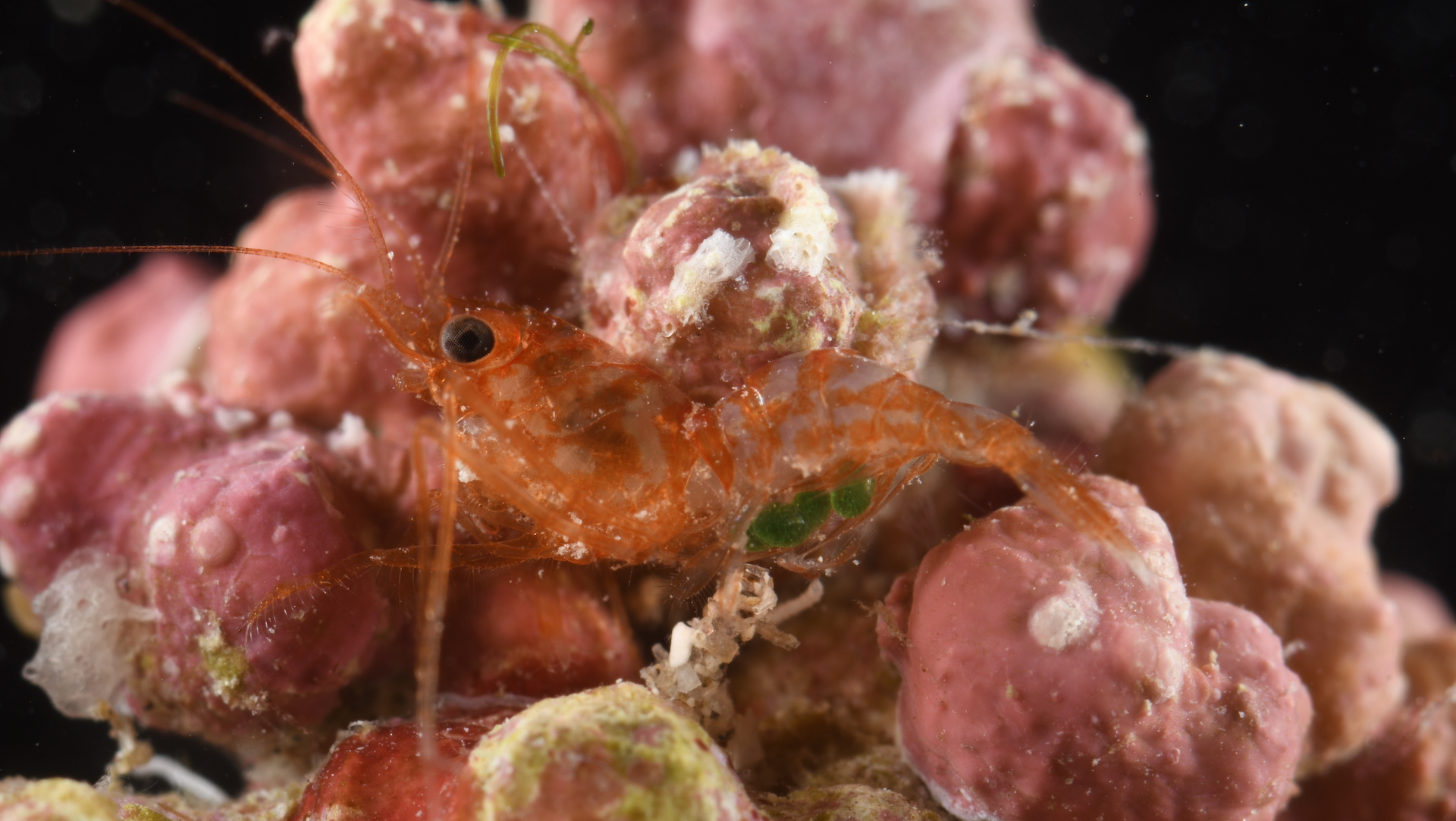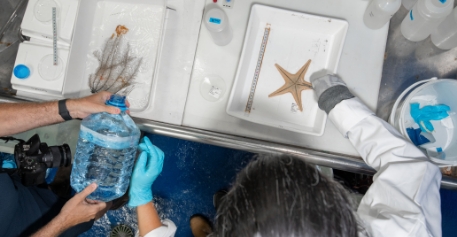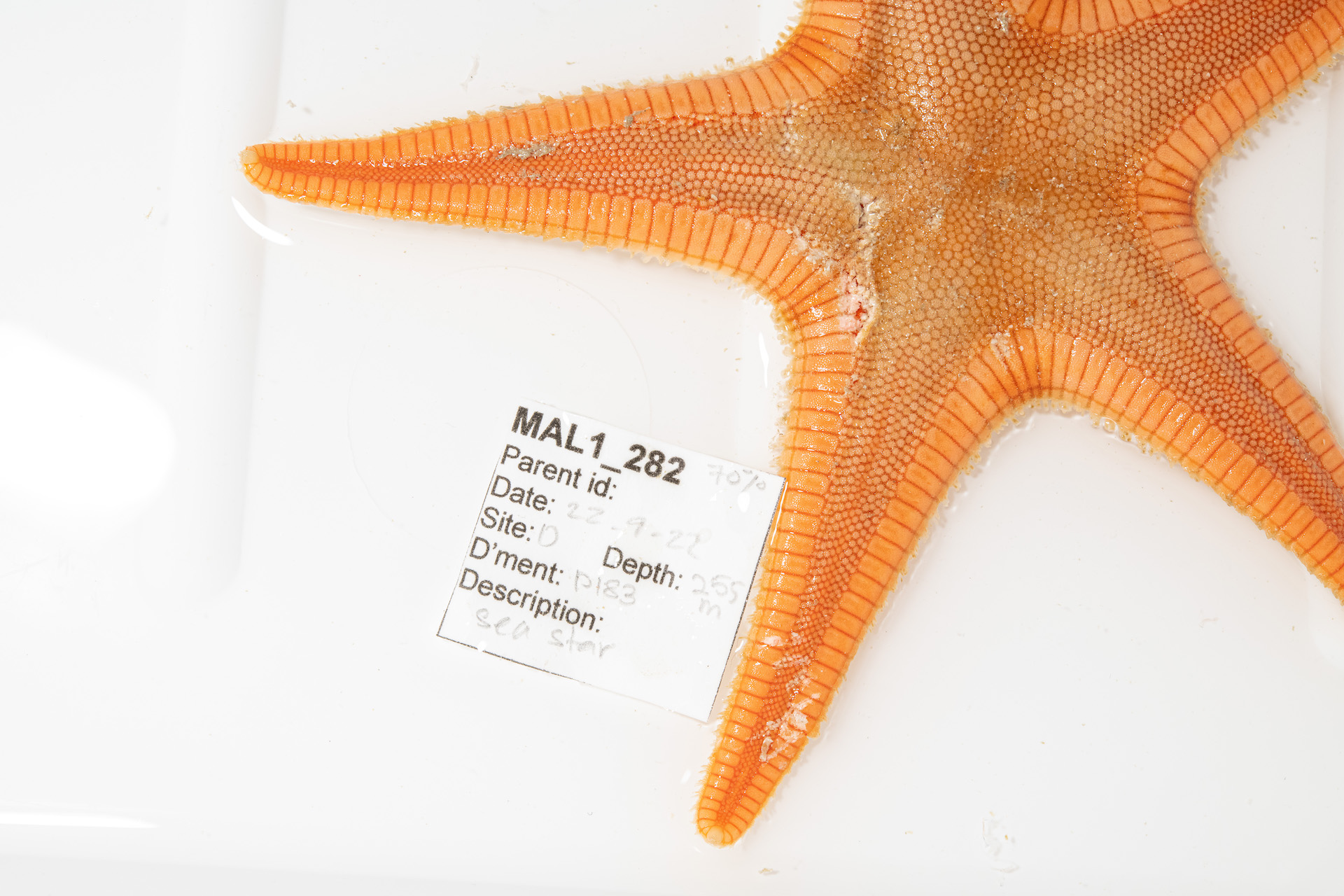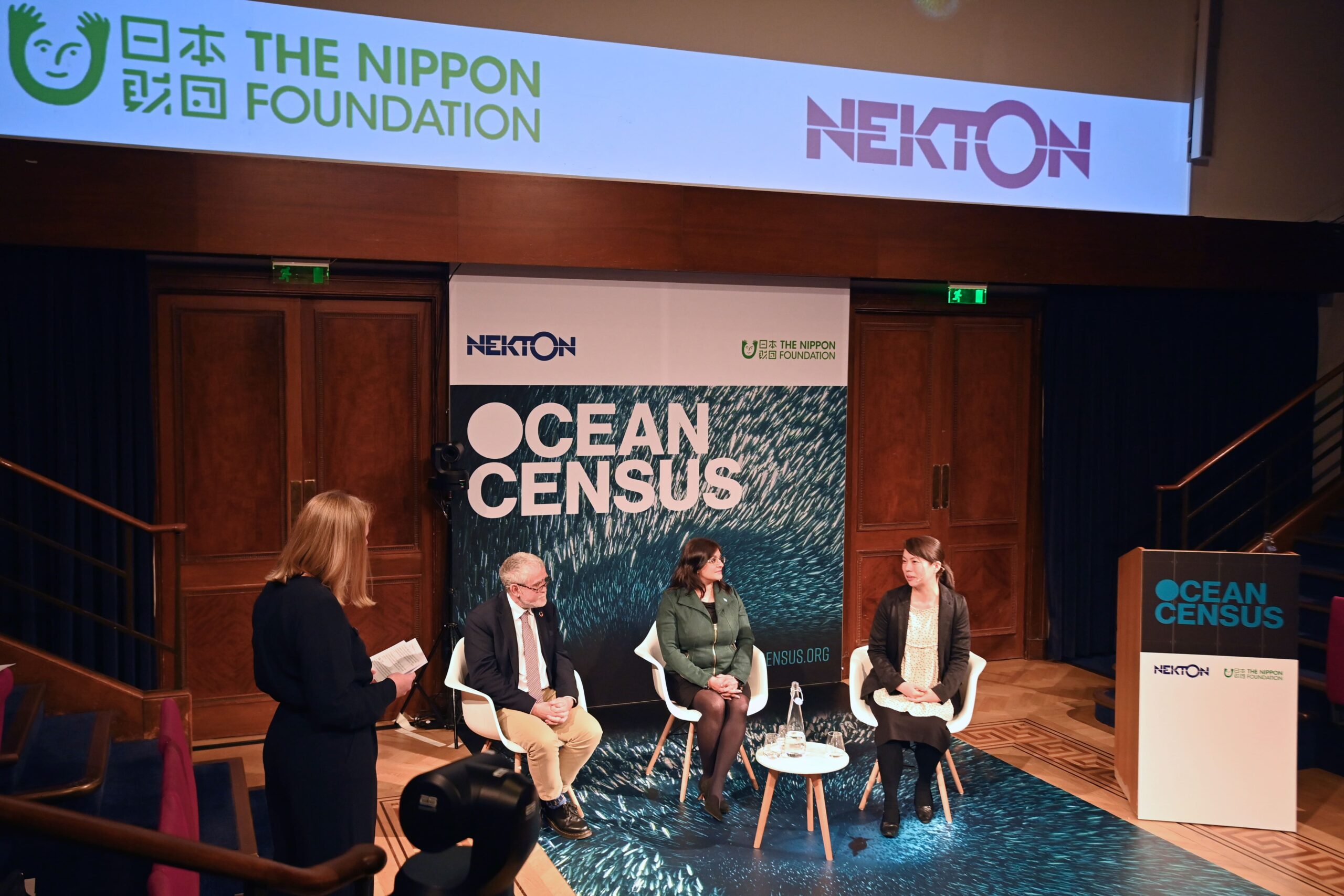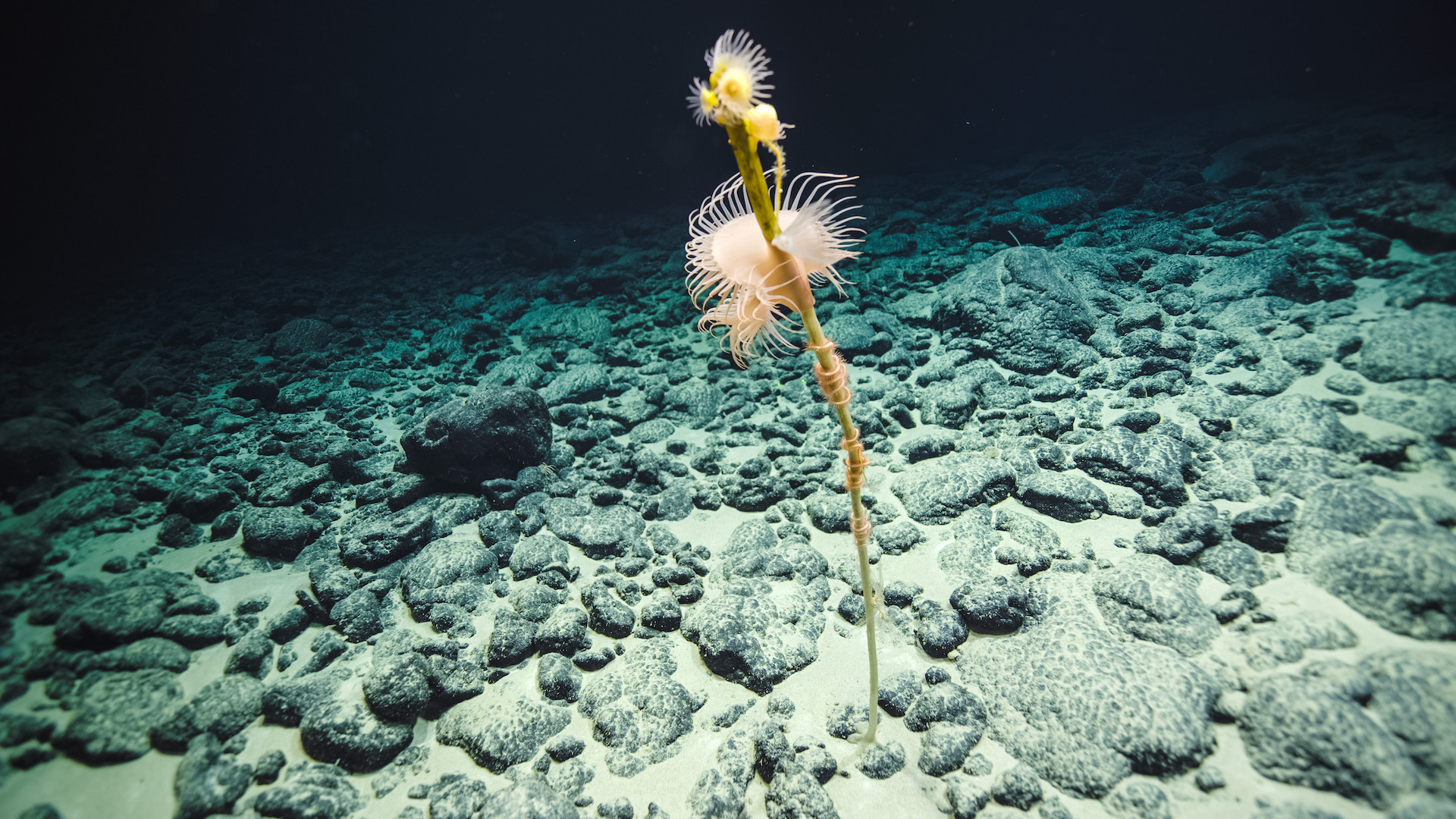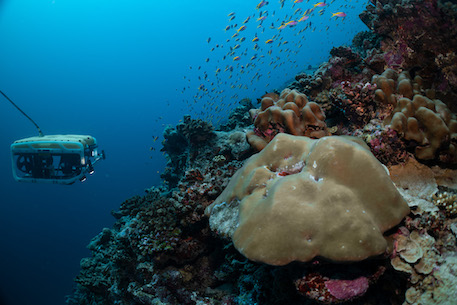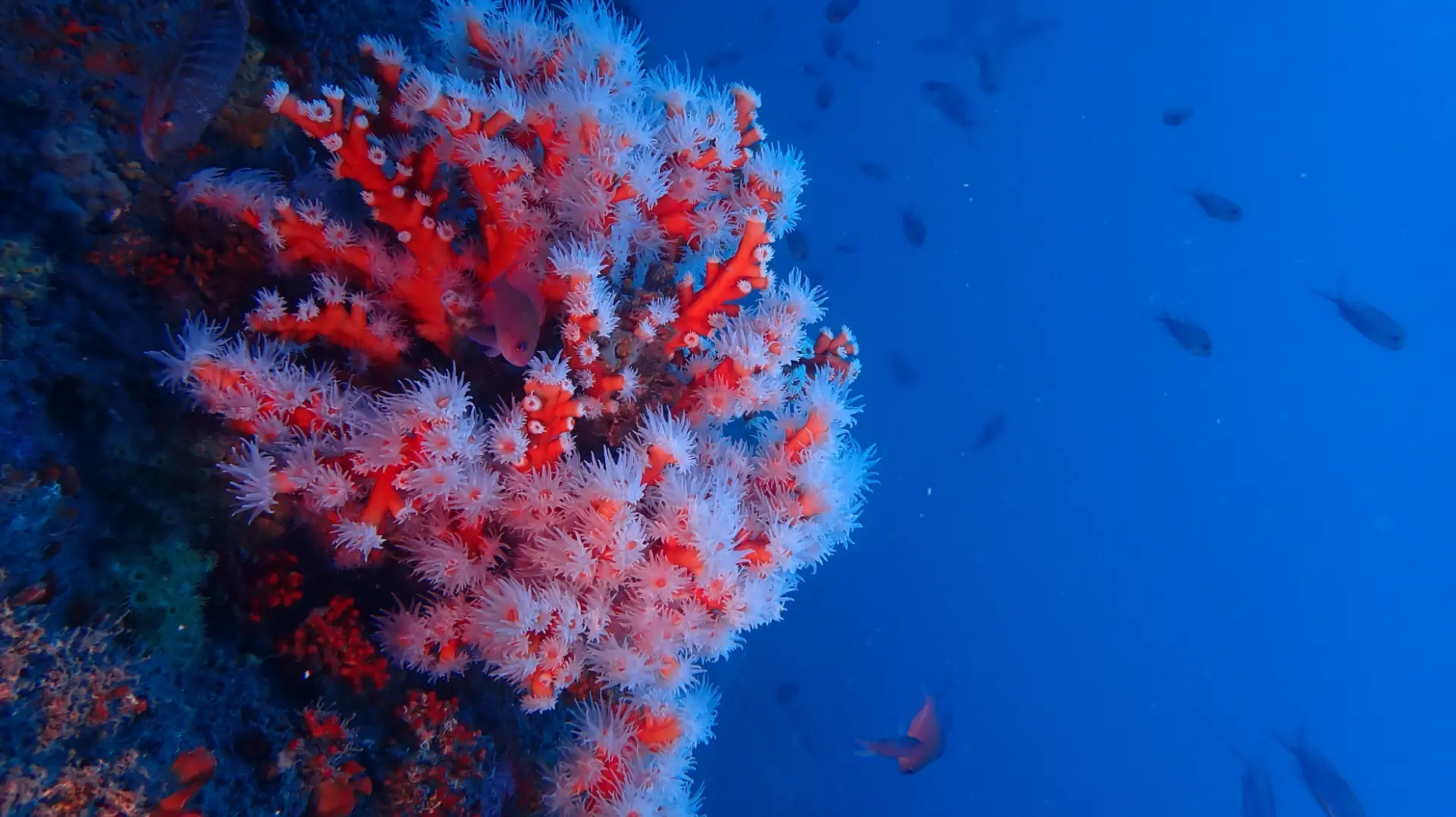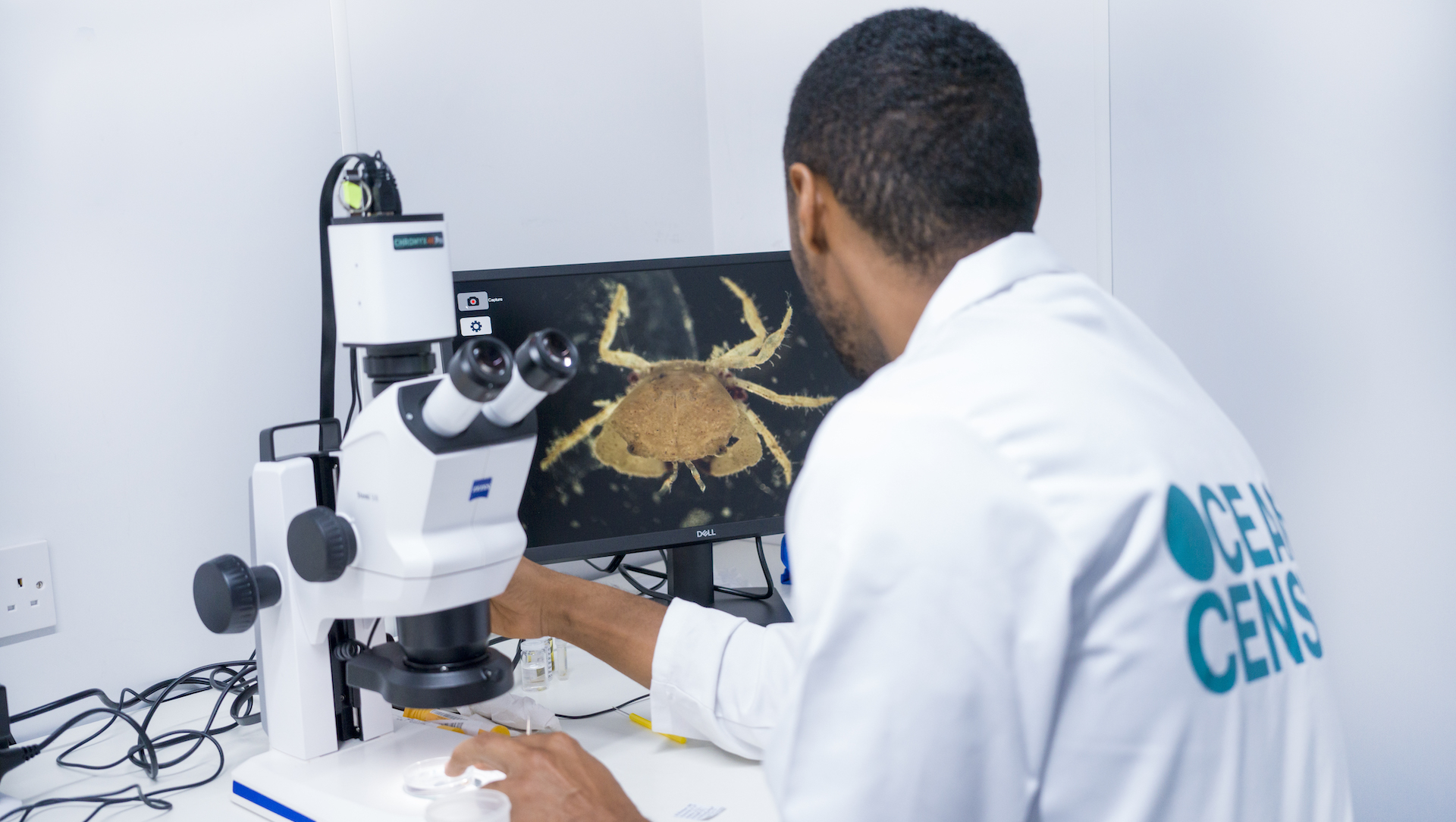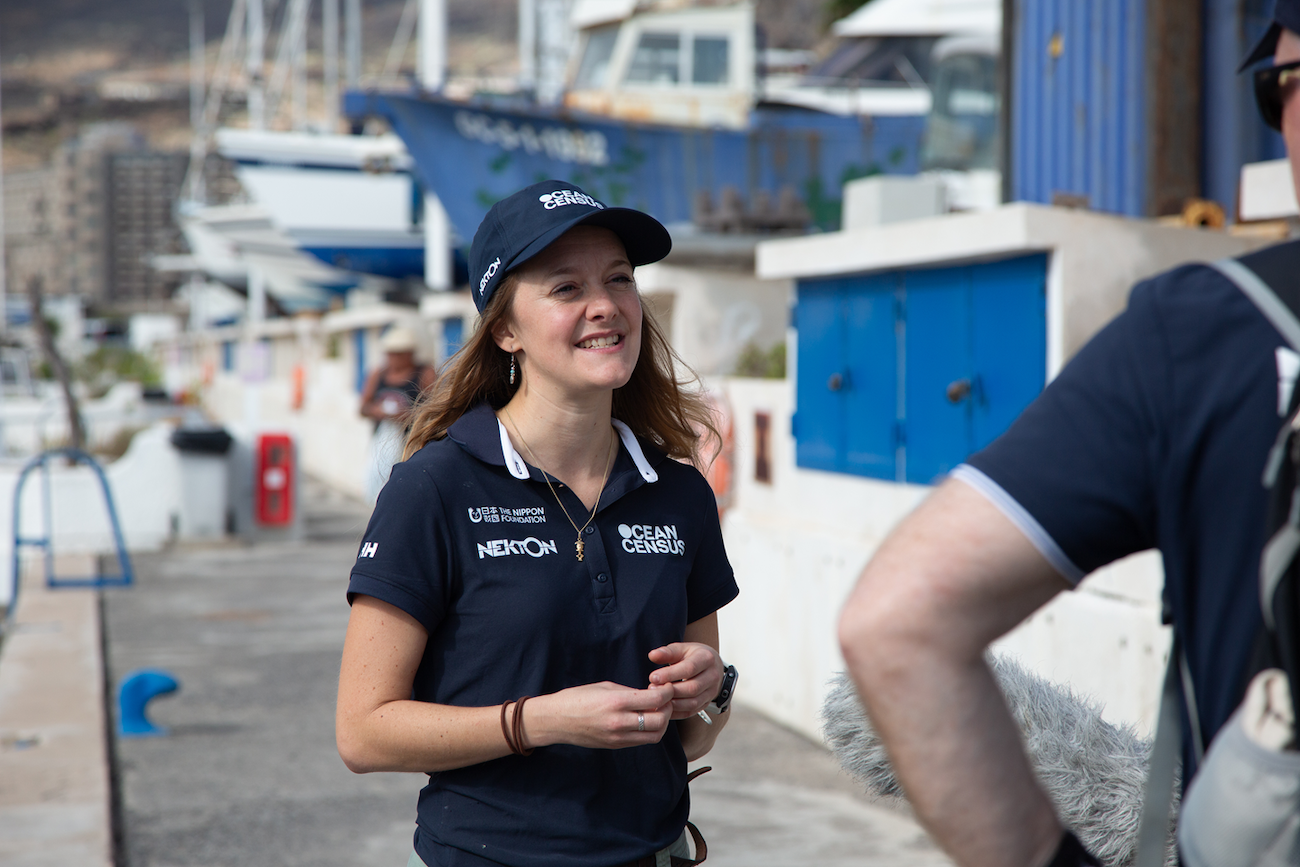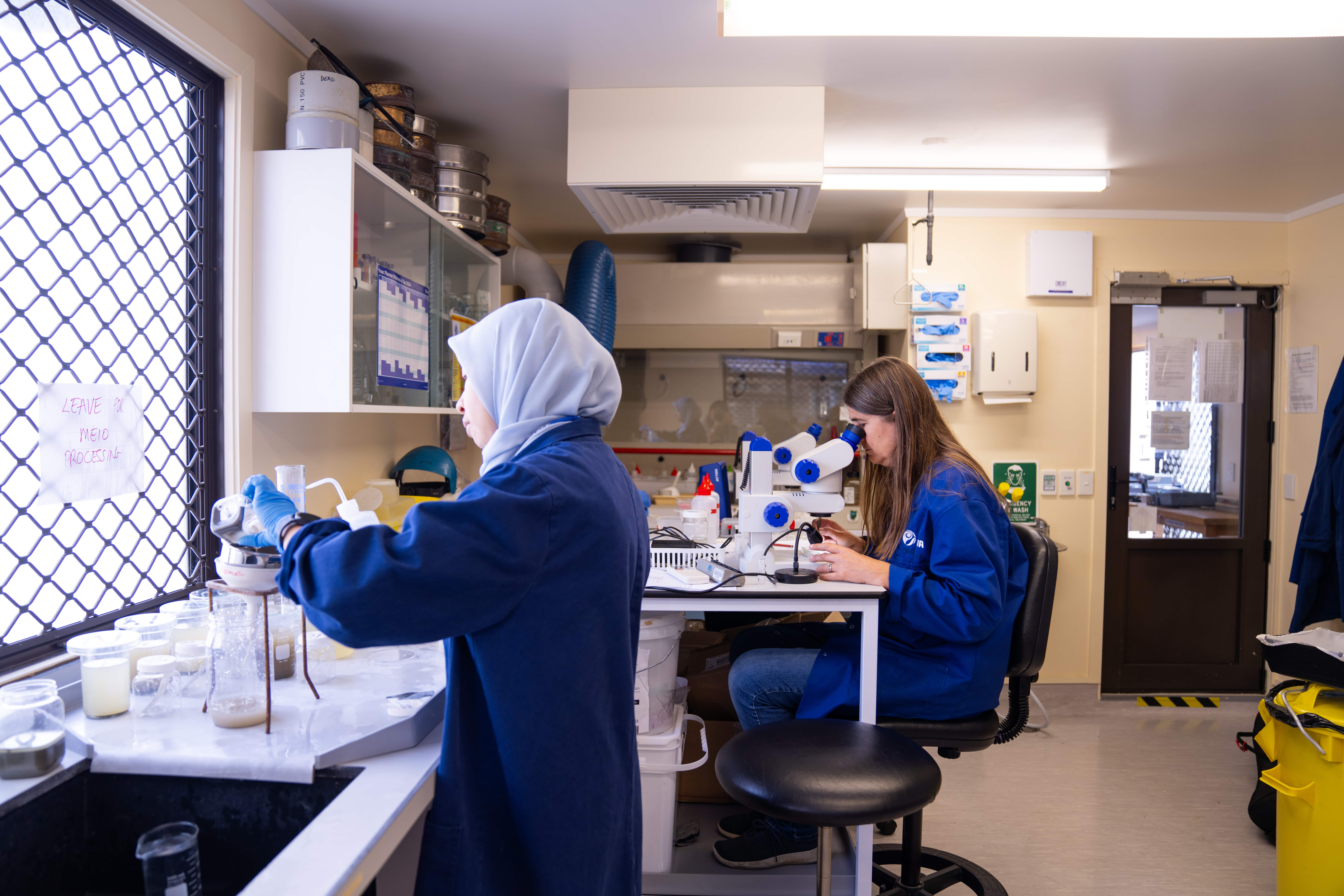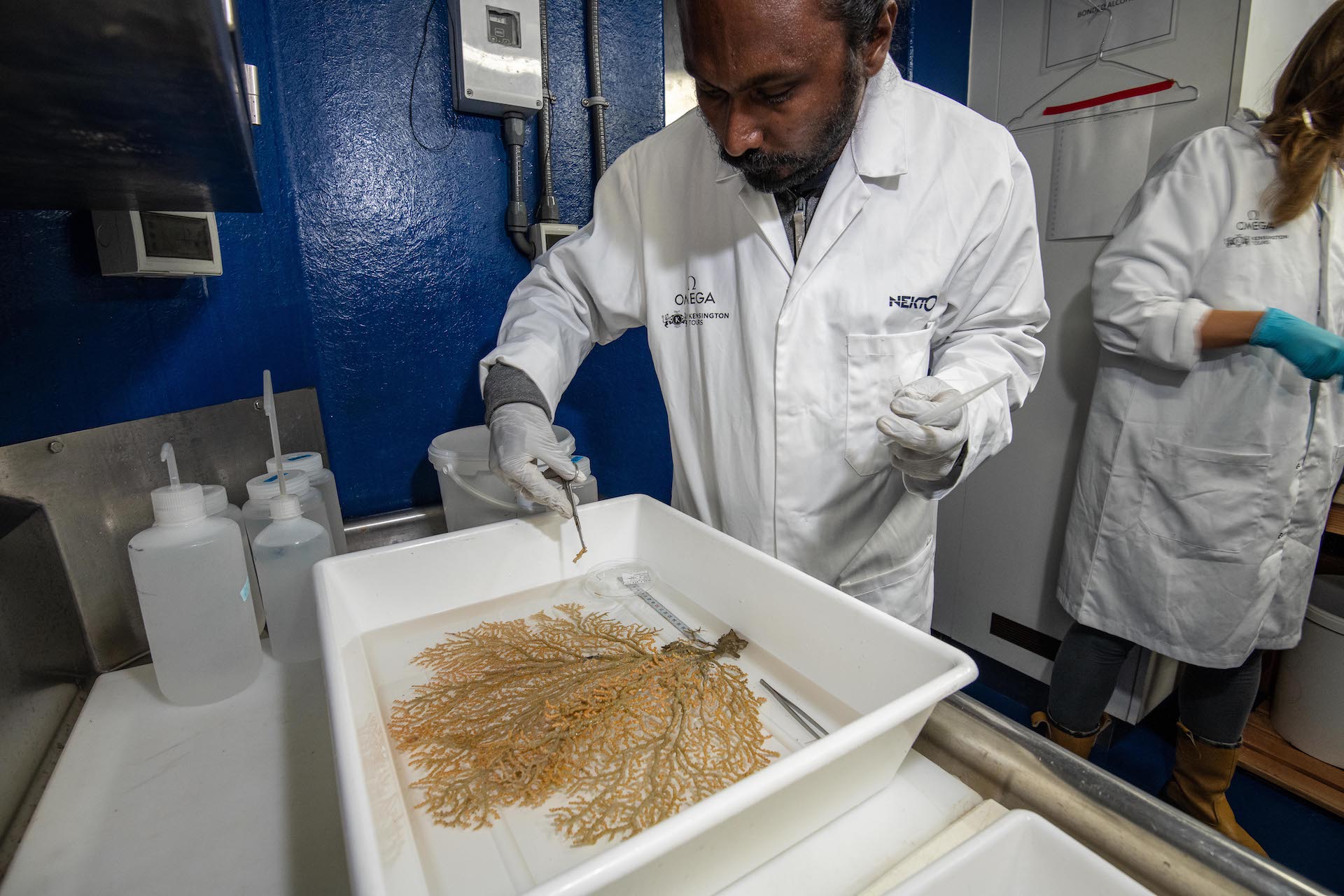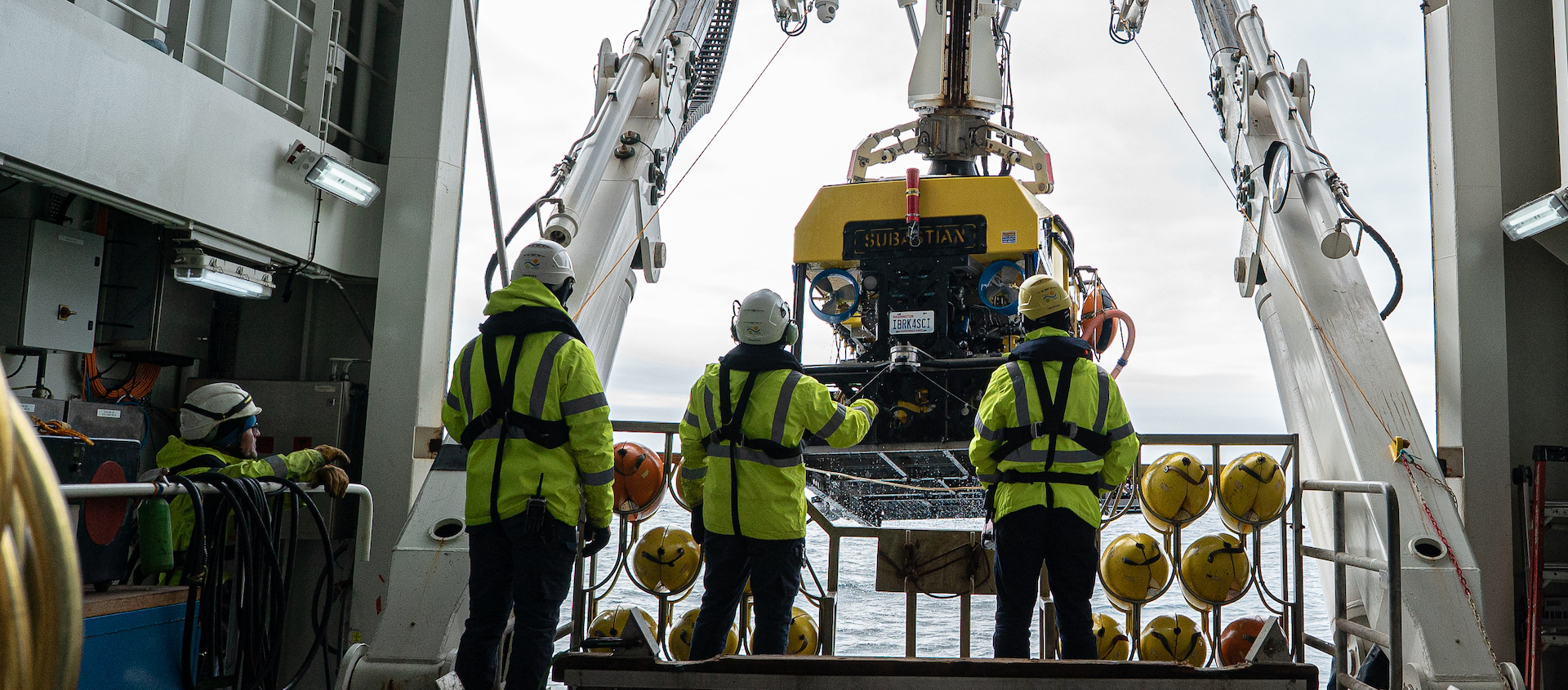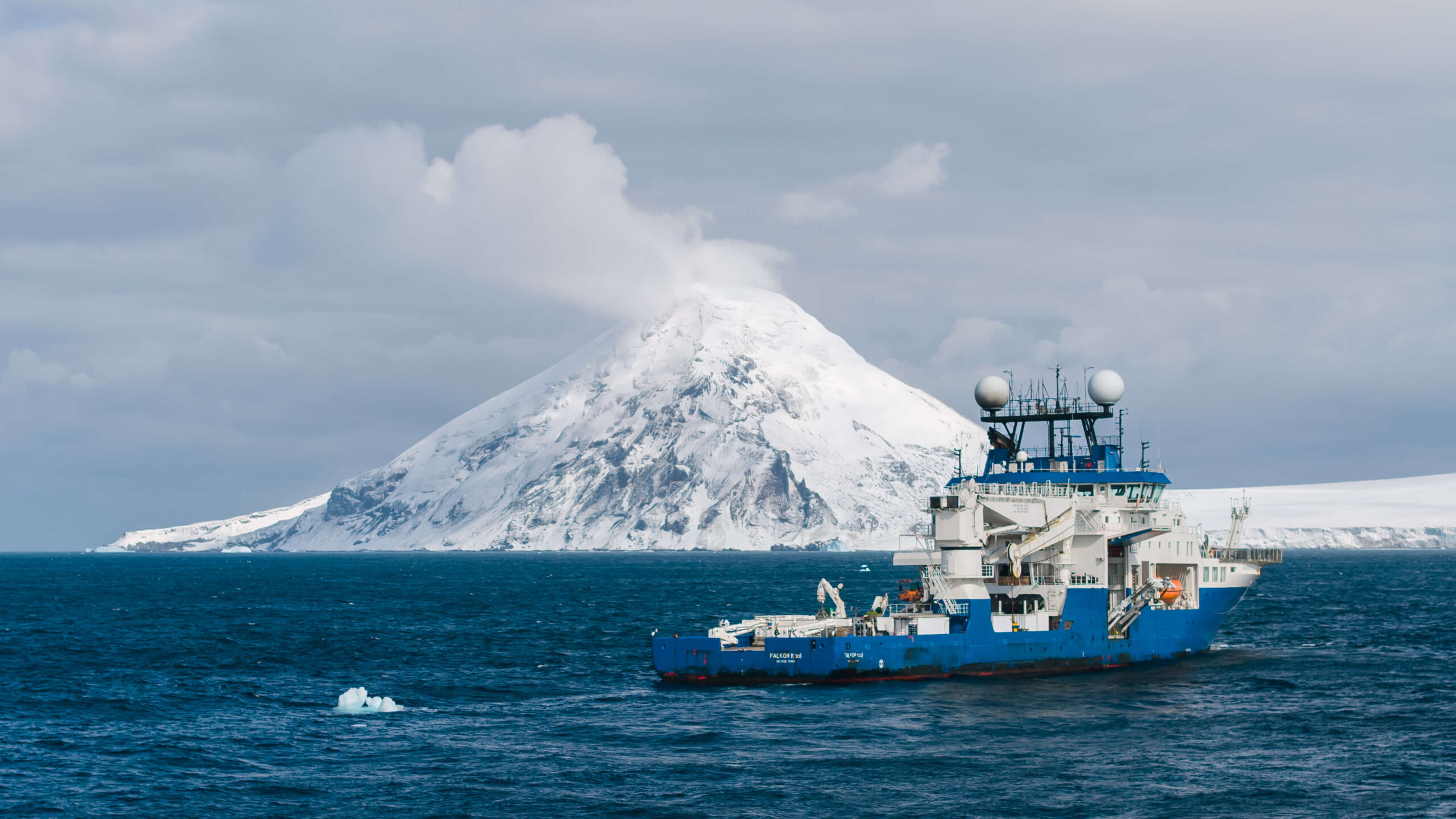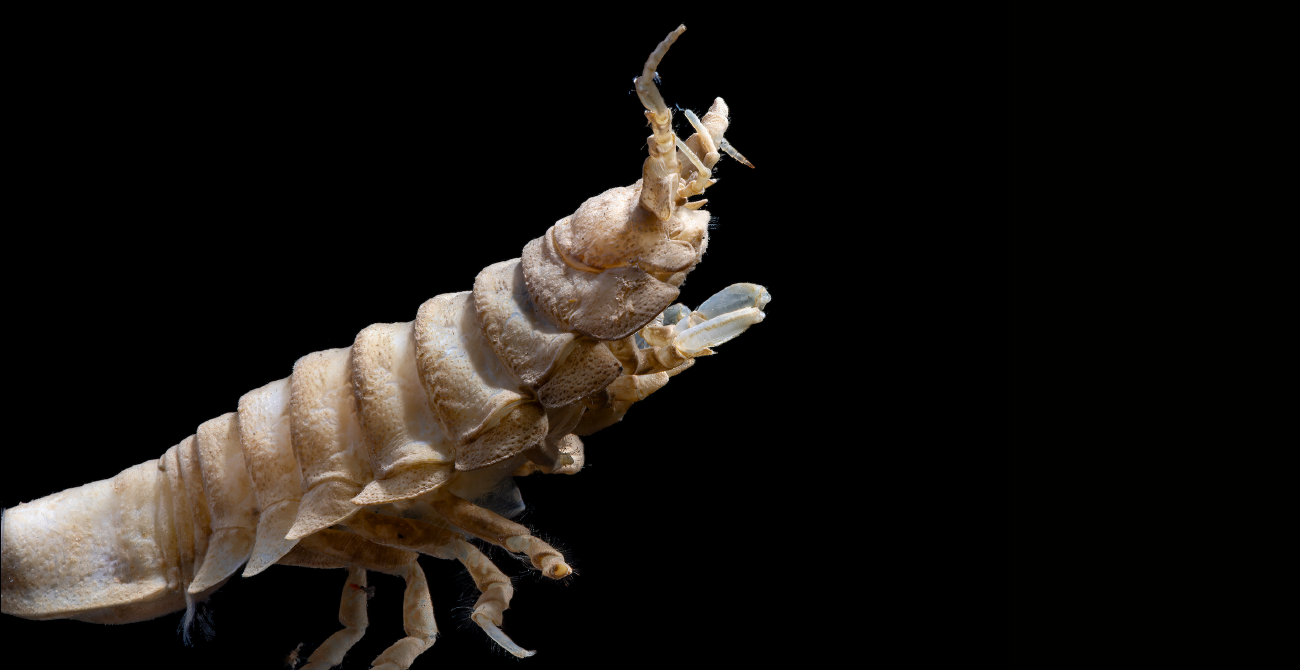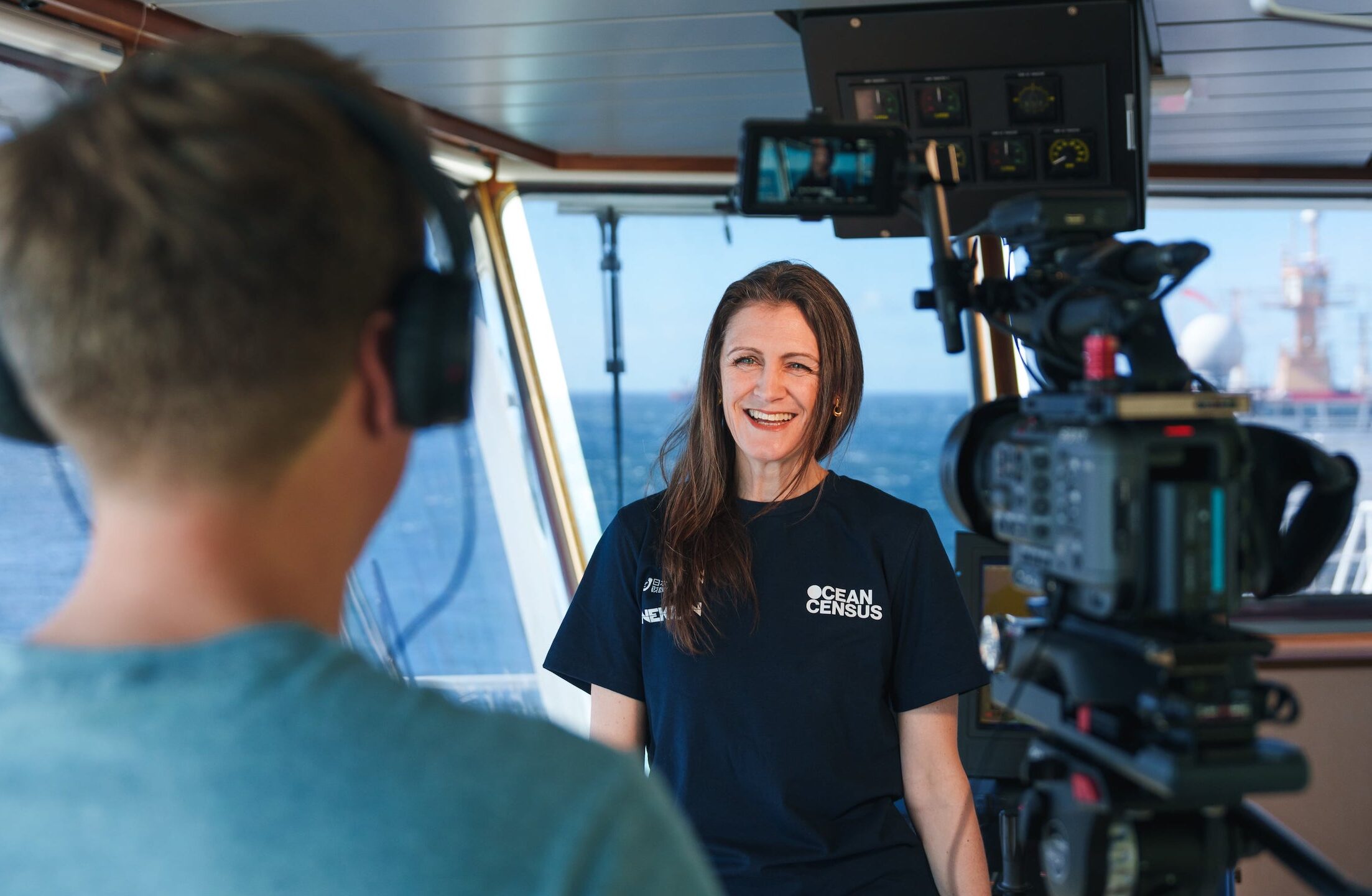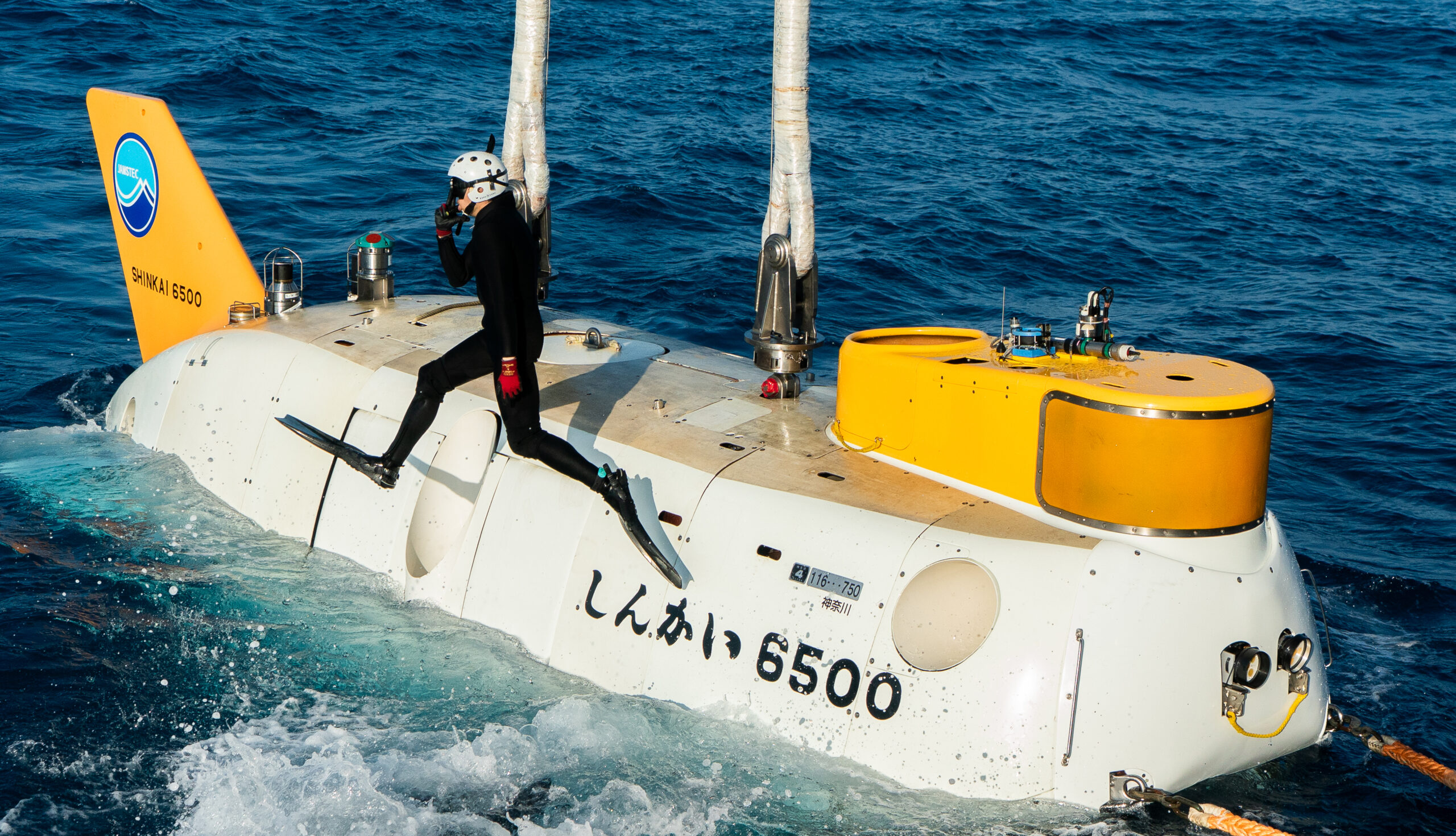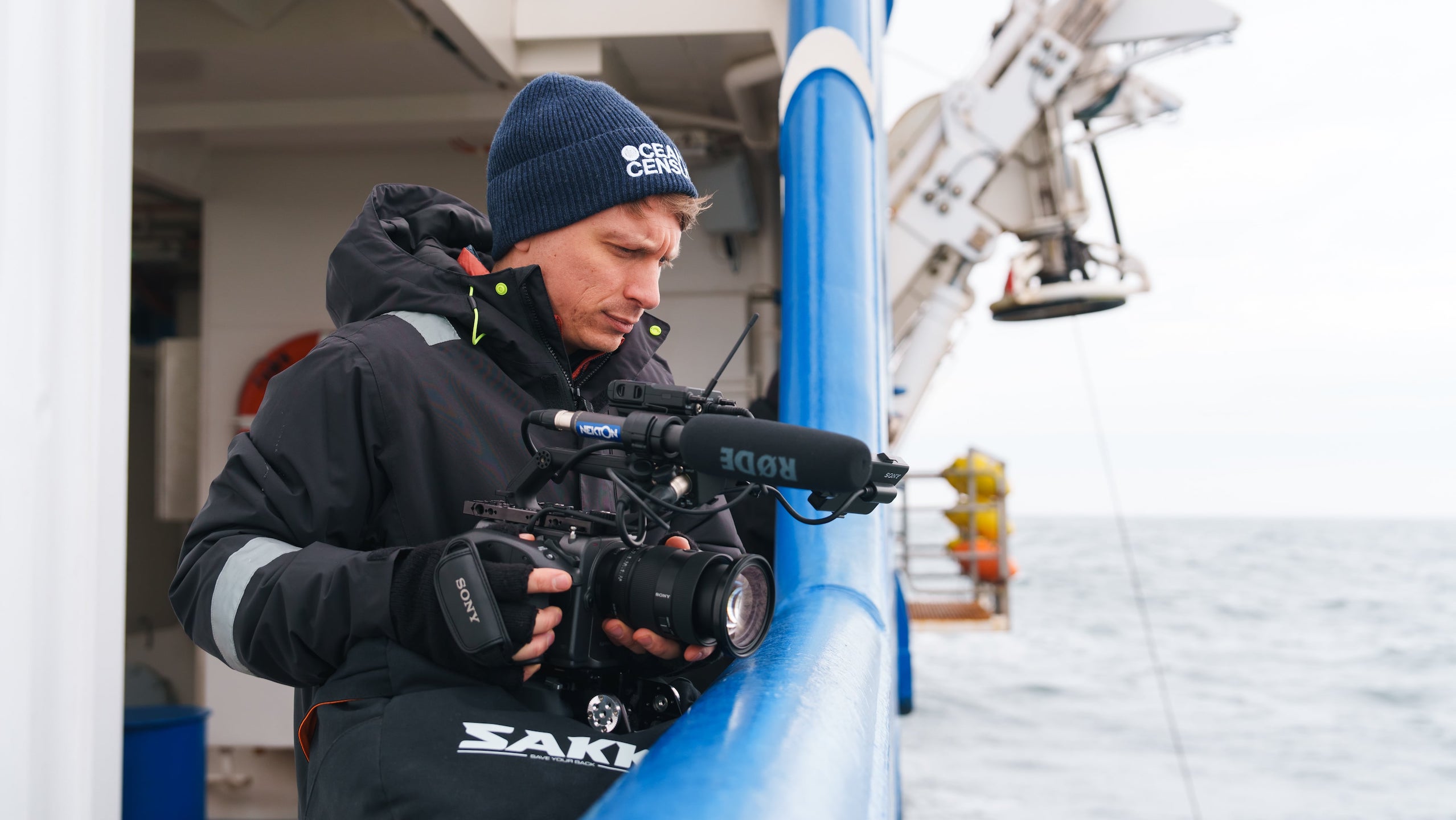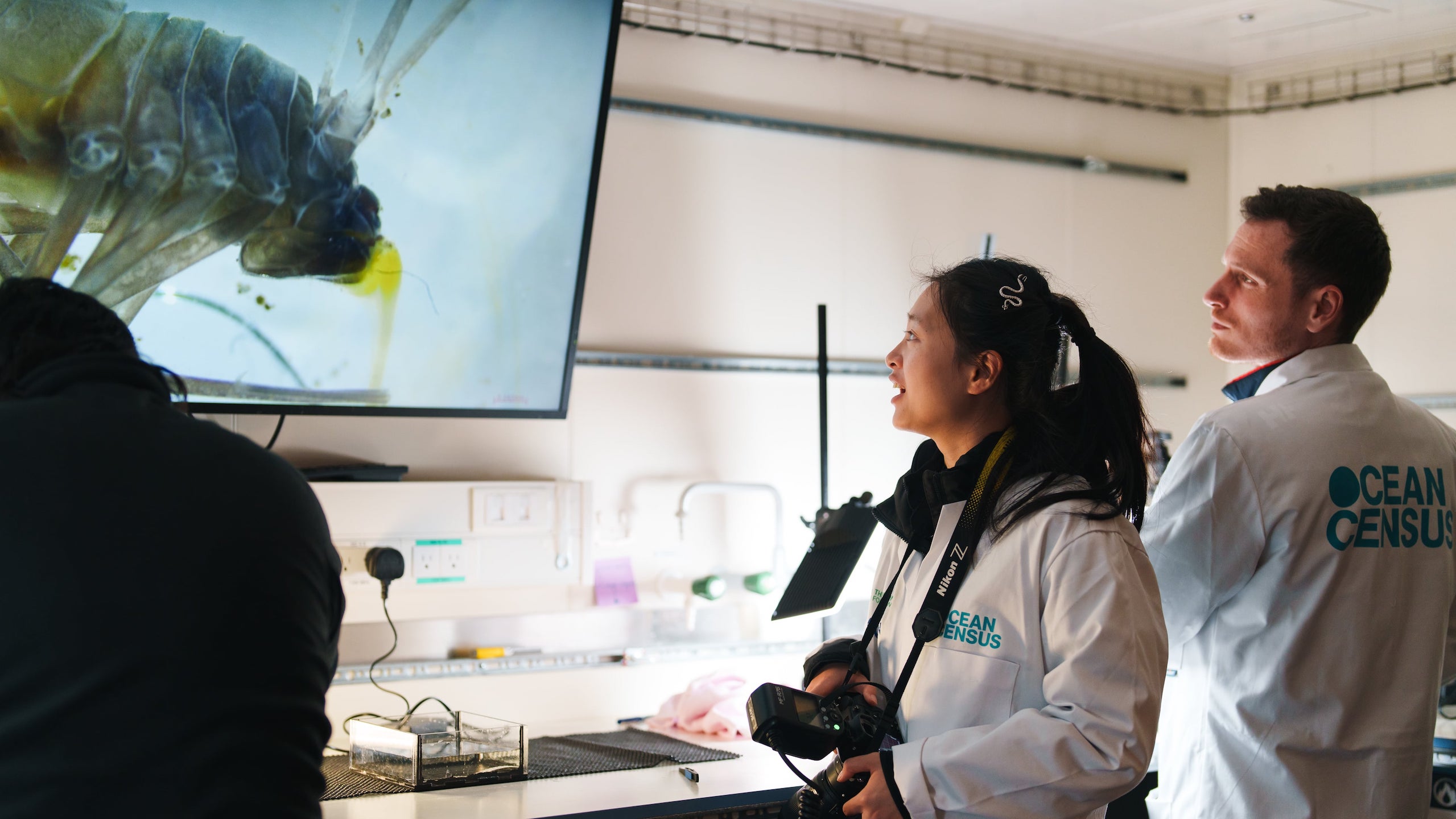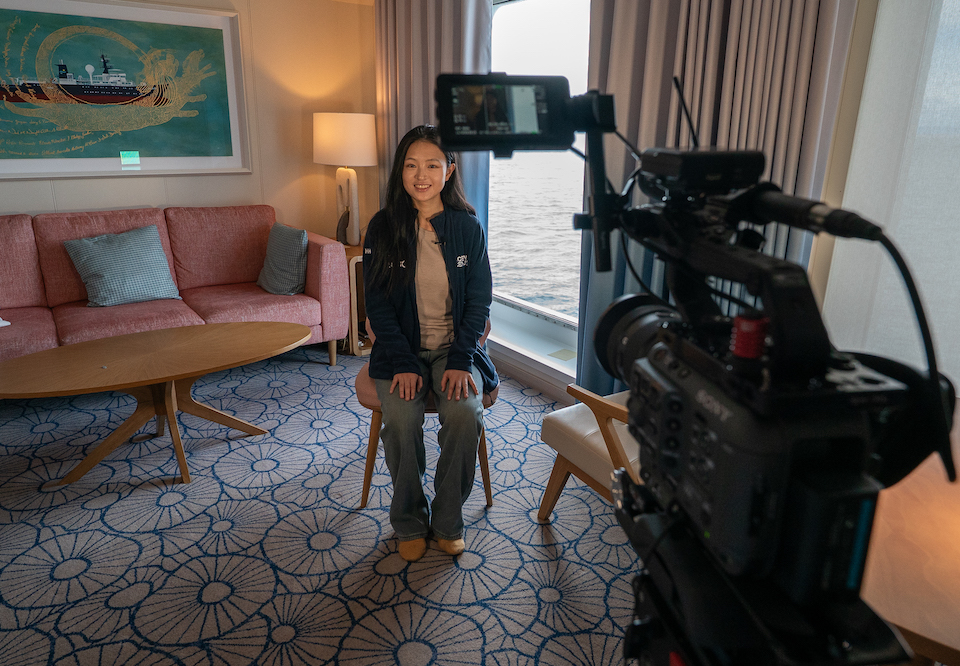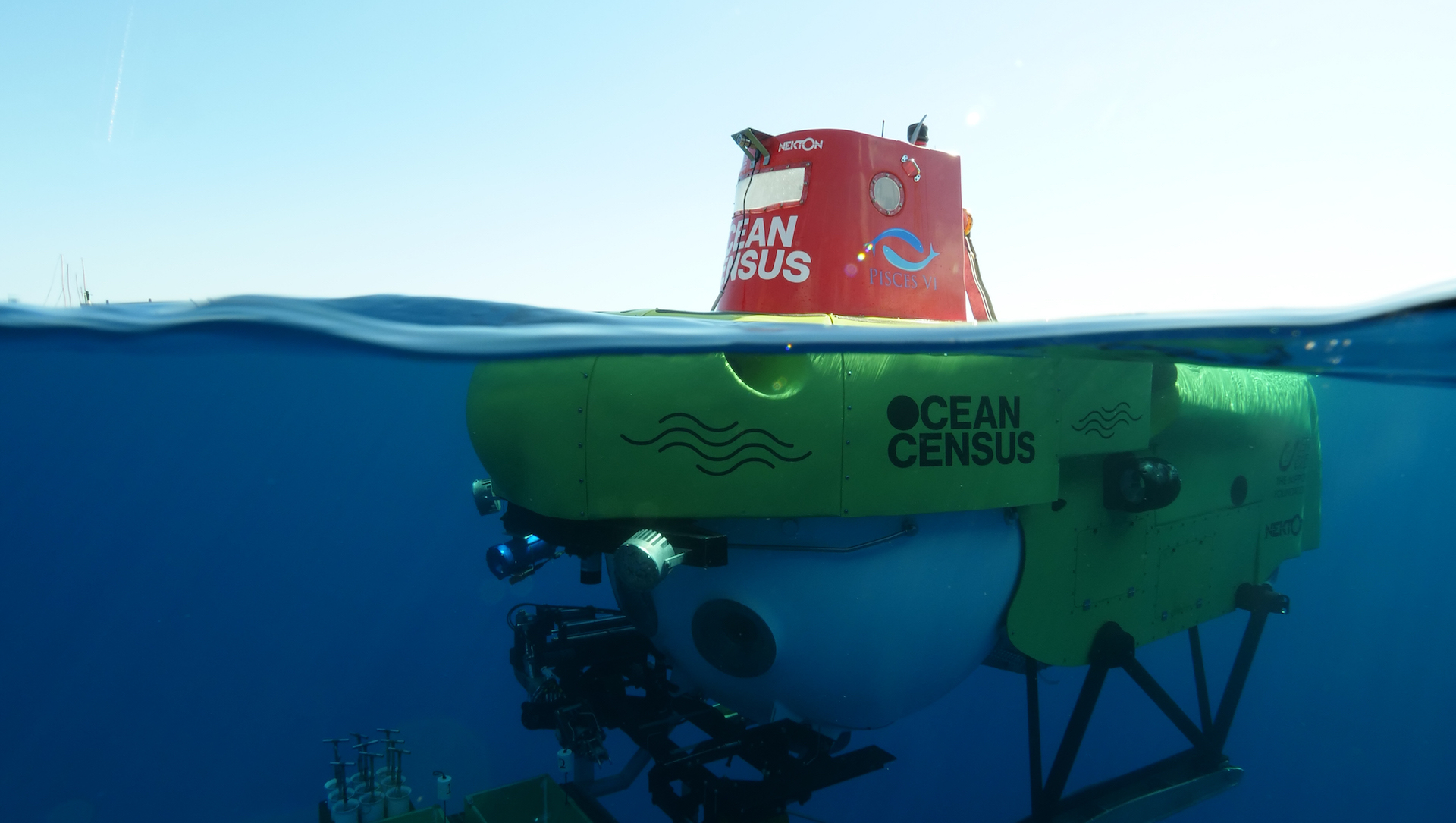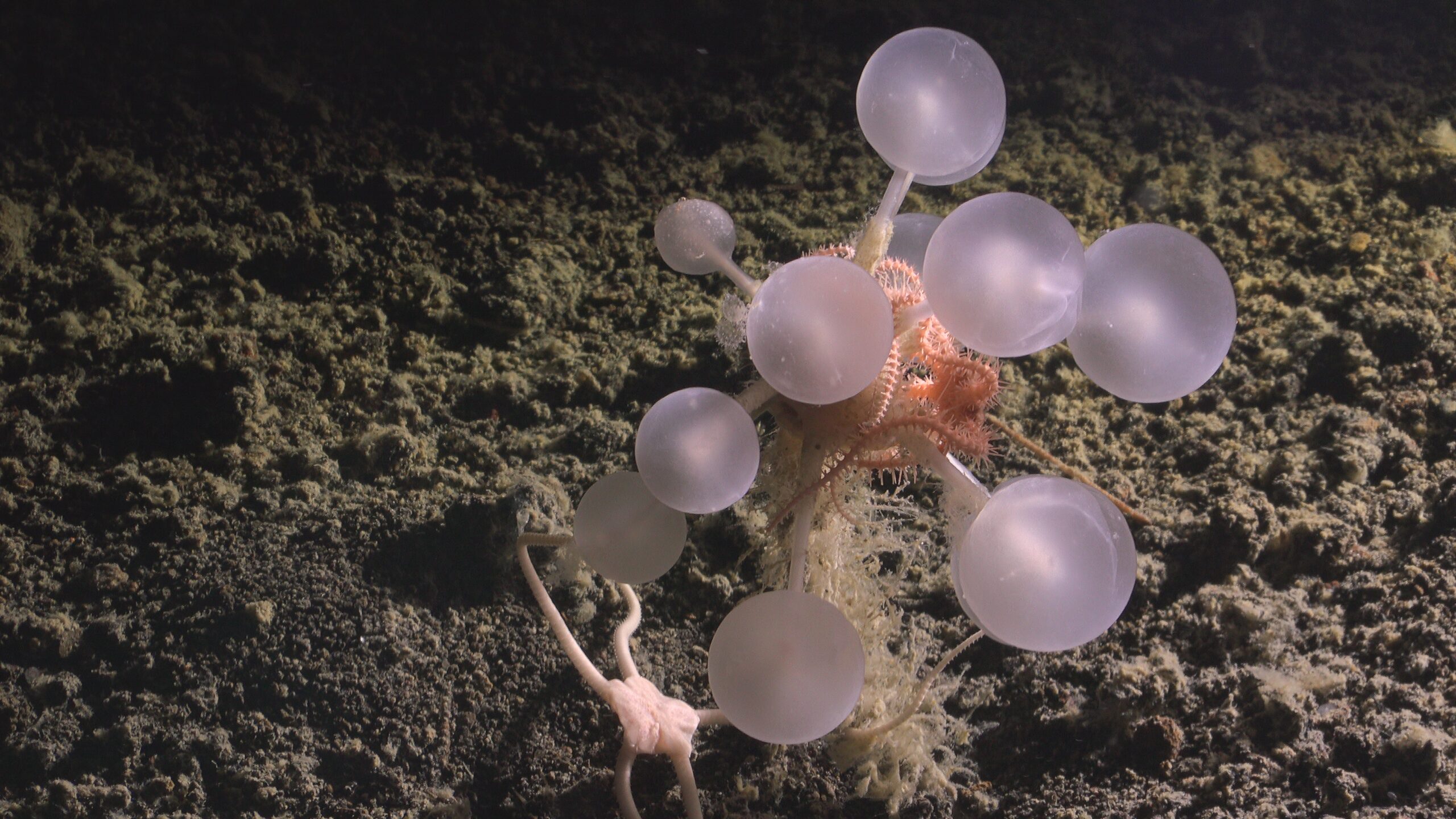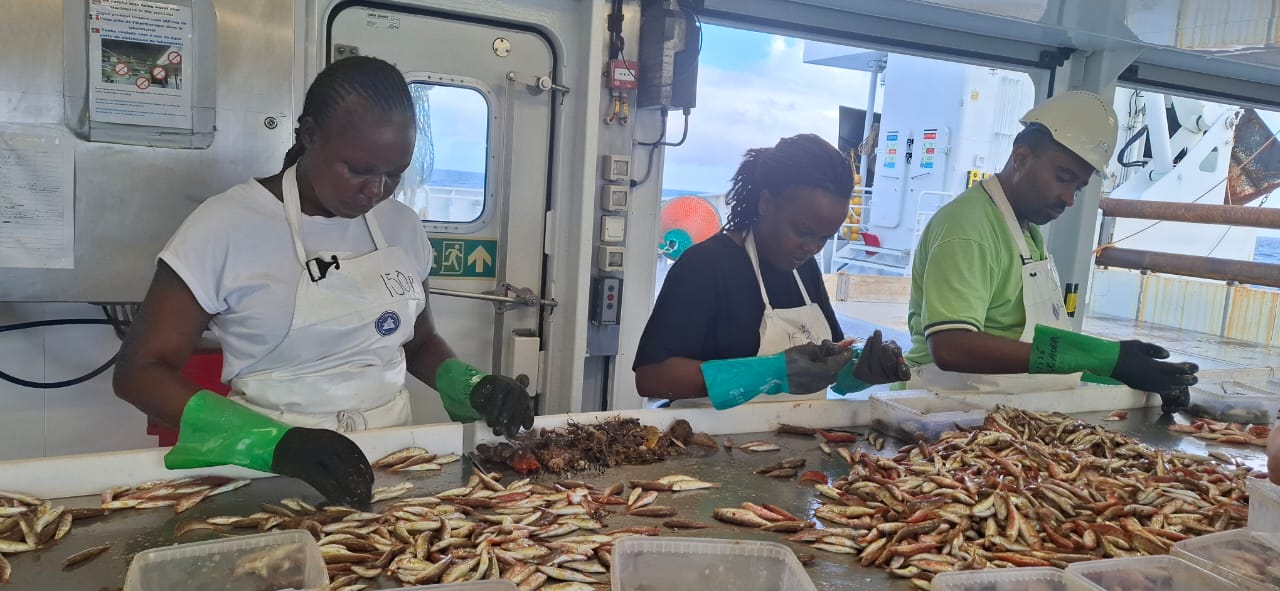
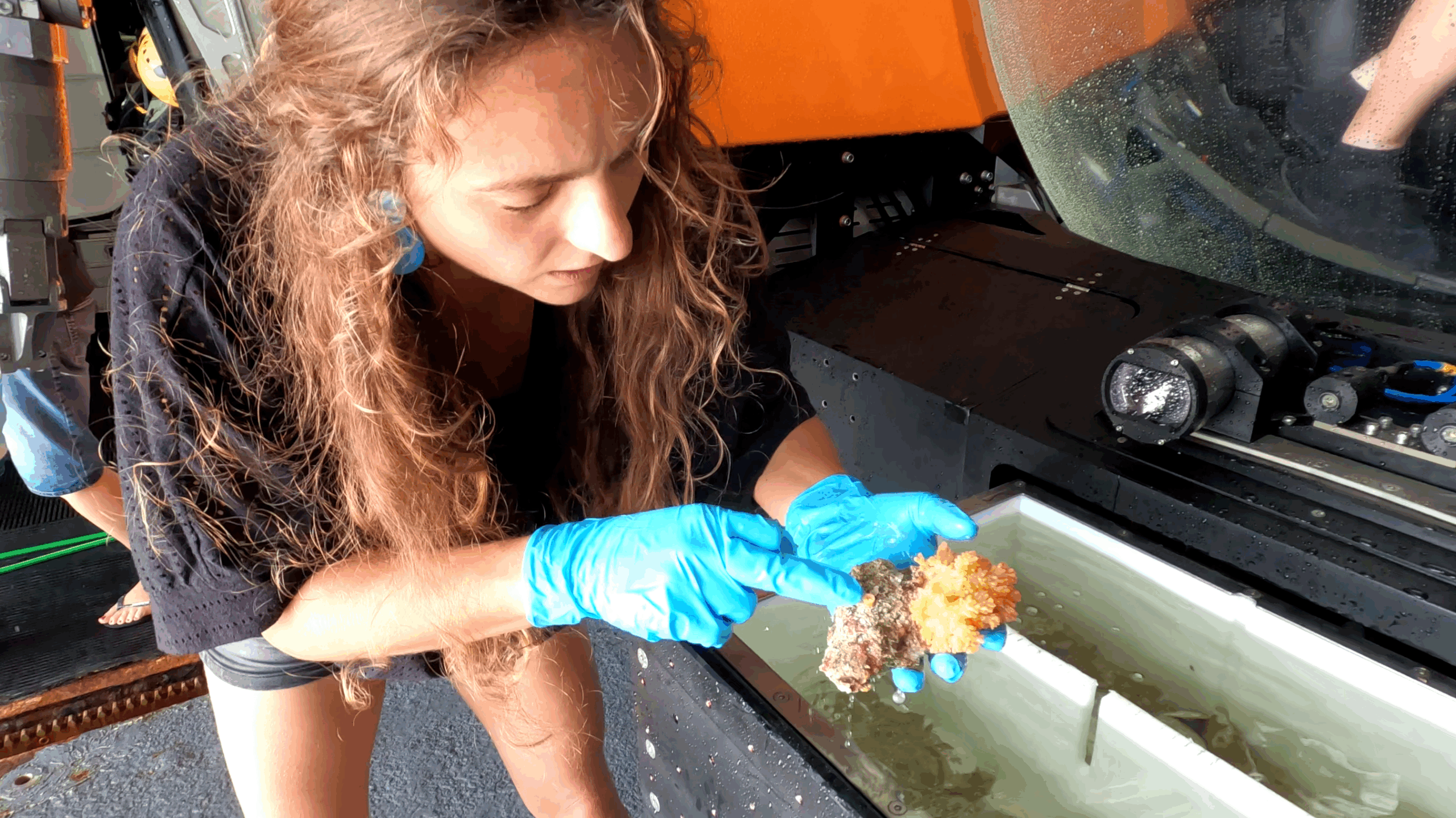
Exploring the importance of Mesophotic Coral Ecosystems (MCEs) with Participant Scientist Dr. Clara Diaz

Understanding the importance of Mesophotic Coral Ecosystems (MCEs)
Dr. Clara Diaz is a member of the Ocean Census Science Network and a postdoctoral Research fellow at the University of Plymouth, where she investigates the ecology and resilience of mesophotic coral ecosystems (MCEs). Clara recently joined the 10-day FAO Tanzania expedition, as part of The Nansen Programme, to explore benthic habitats off the coast of Tanzania.
Clara’s research primarily focuses on the benthic ecology of Mesophotic Coral Ecosystems (MCEs) in the Chagos Archipelago, Indian Ocean. Mesophotic Coral Ecosystems, found roughly between 30m and 150m deep in tropical and subtropical areas, are diverse and unique habitats, harbouring numerous species; but are already threatened by climate change.
The objective of the FAO Tanzania expedition was to map the seabed of Tanzania and record the diversity of the benthic habitat, onboard the R/V Dr Fridtjof Nansen. The expedition team also recorded the diversity of fishes from the upper-mesophotic to the deep sea, with depths of more than 600m.
Feature Image Credit: Dr Clara Diaz
Mesophotic Coral Ecosystems (MCEs)
What inspired your focus on Mesophotic Coral Ecosystems (MCEs), in particular, as opposed to shallow or deep sea reef systems?
- Shallow coral reefs have been the focus of research for centuries due to their accessibility, ecological importance, and economic value, as well as their high vulnerability to anthropogenic pressures.
- Deep-sea ecosystems, while more challenging to study, have still received significant scientific attention over time, first through bottom trawling and, more recently, with advanced deep-sea technologies.
- MCEs, however, represent a comparatively underexplored zone between these two extremes. They occur at depths where sufficient light supports photosynthesis and complex ecological communities, yet they remain difficult to access with traditional diving methods. Research on MCEs only began in earnest around two decades ago, and the limited baseline knowledge about these systems provides an important opportunity to address fundamental ecological questions. That sense of mystery and opportunity for exploration is what drew me into this field of study.
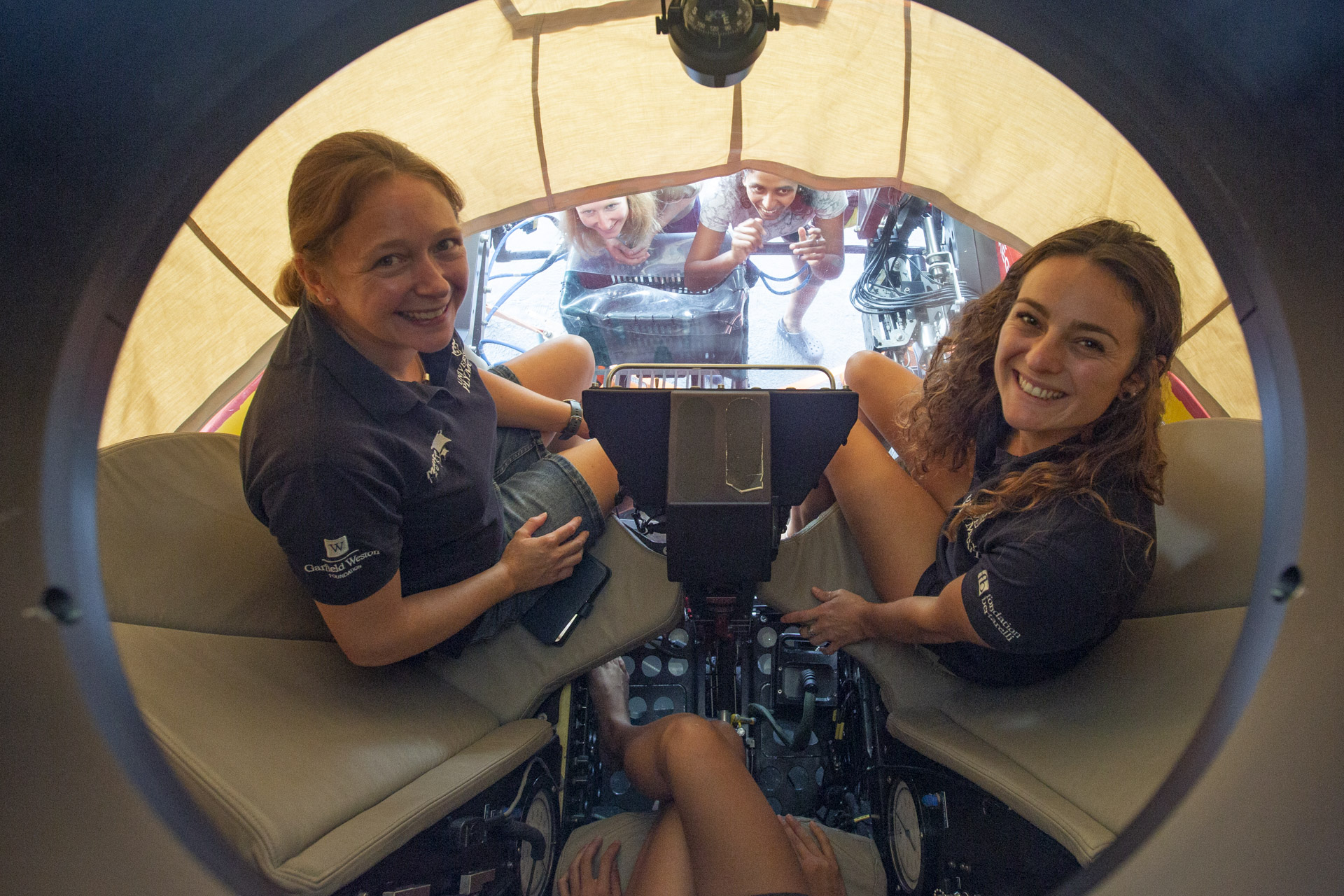
What are some of the most surprising factors you’ve discovered about life in MCEs?
- The vertical complexity of these habitats is remarkable. They exhibit extensive three-dimensional structures dominated by large gorgonians and antipatharians, while maintaining a reef-like framework close to the seabed.
- The occurrence of photosynthetic scleractinian corals at depths exceeding 100 meters is particularly striking, as is the observation that these deep corals can also undergo bleaching.
- Additionally, the presence of large predators and shallow-reef-associated fish species at mesophotic depths highlights the ecological connectivity between shallow and deeper reef systems.
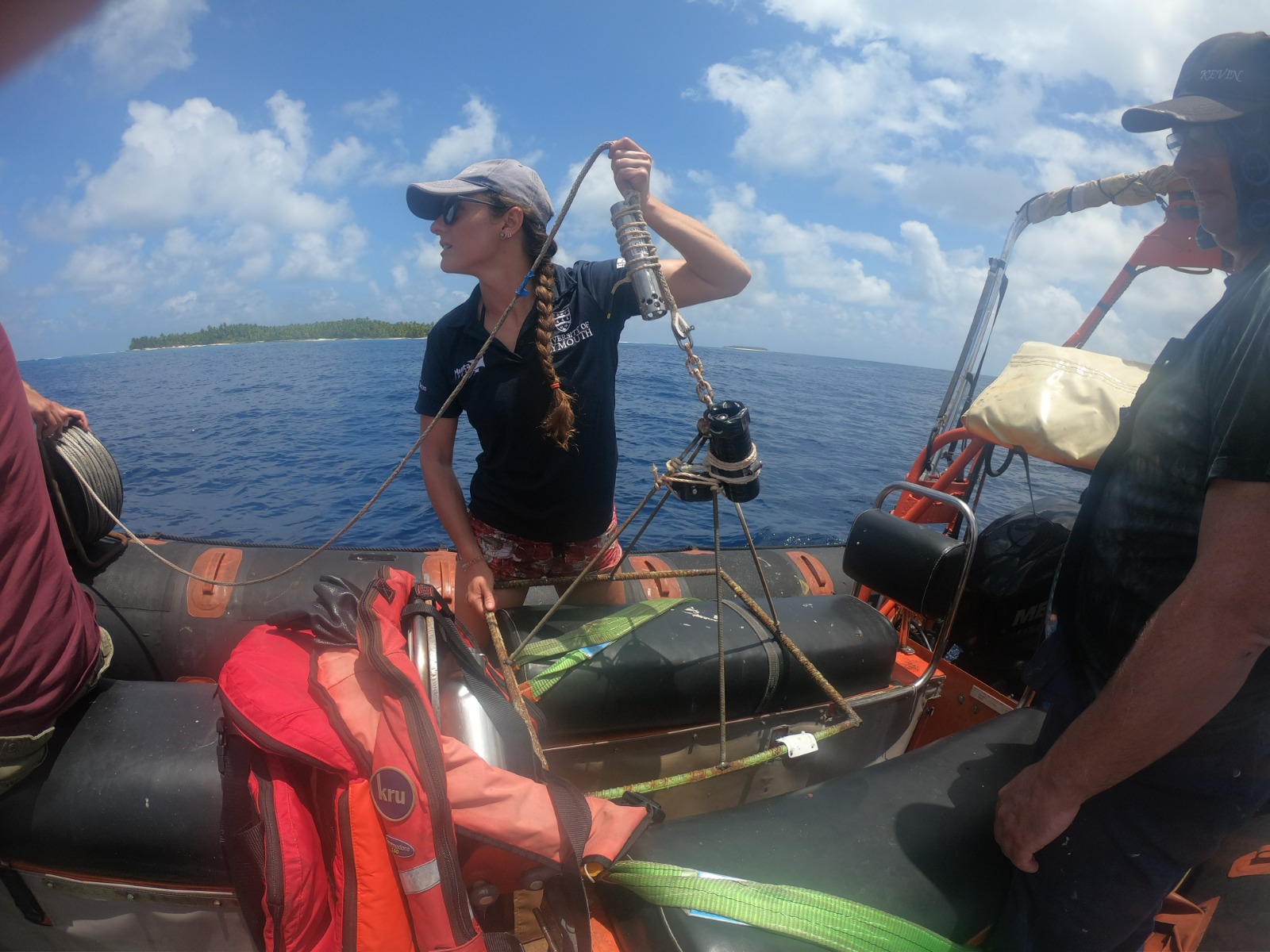
Impacts of Climate Change on MCEs
How are MCEs affected by anthropogenic (human) impacts, and are they more resistant than shallow water reefs?
- MCEs experience both direct and indirect human pressures. Direct impacts include entanglement from ghost fishing gear, pollution, overfishing, and the introduction of invasive species, although generally at lower intensity than in shallow reefs.
- Indirect effects from climate change — such as increased subsurface thermal anomalies and cold-water upwelling events to a lesser extent — are becoming more pronounced.
- It would be inaccurate to describe MCEs as more resistant; however, they often appear to be in comparatively better condition. Their apparent resilience may stem from reduced direct human interference rather than inherent ecological resistance.
Have you observed any unique examples of species adaptation to the impacts of climate change during your work on MCEs?
- Some coral species that experienced bleaching have shown recovery over time, indicating potential acclimatization or resilience mechanisms.
- However, evidence of long-term adaptation to changing environmental conditions remains limited, and further research is needed to assess physiological and genetic responses in MCE organisms.
EAF-Nansen Tanzania Expedition
What has been the most significant finding from your time on the EAF-Nansen Tanzania expedition?
- Tanzanian MCEs exhibited both similarities and differences to those of Chagos.
- Benthic communities were diverse, with fewer large gorgonians but a notable presence of massive barrel sponges.
- Photosynthetic scleractinians were relatively scarce, although one colony was documented at a depth of 108 meters — among the deepest recorded in the region.
- Fish diversity was high, but abundance appeared lower than in Chagos, and no sharks were observed within the MCE depth range, only in deeper habitats.
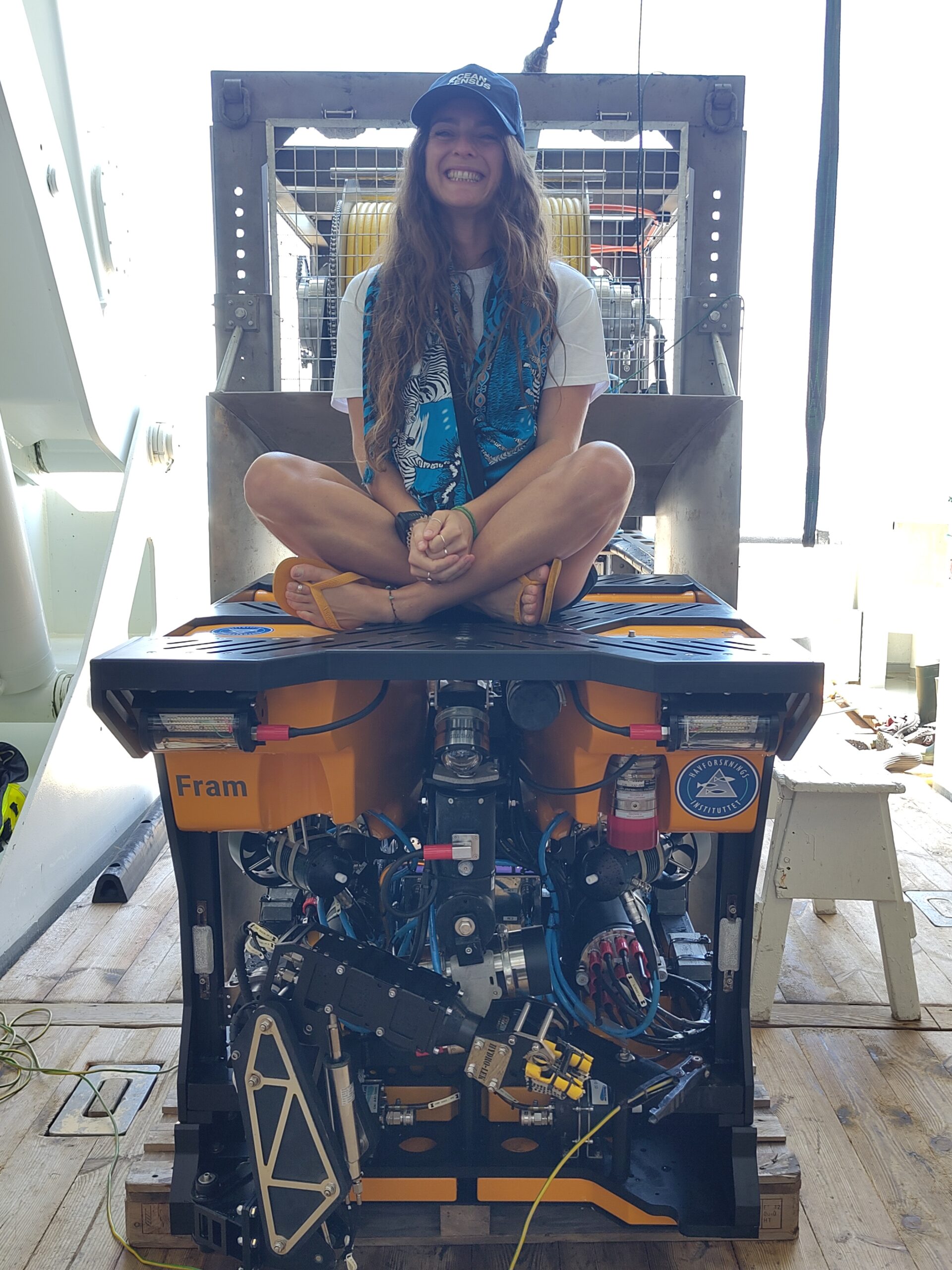
How might the findings from this expedition contribute to our understanding of MCEs?
- The benthic assemblages displayed high spatial variability, likely influenced by differences in substrate type, geomorphology, and hydrodynamic conditions among sites.
- This expedition provided the first systematic exploration of Tanzanian MCEs, revealing substantial biodiversity beyond the shallow reef zone.
- Both ROV footage and collected specimens indicate the potential discovery of new species, which will contribute to refining biodiversity baselines and improving understanding of Indian Ocean mesophotic ecosystems.
- These data will directly contribute to MCEs conservation, notably by the implementation of MPAs in the surveyed zones.
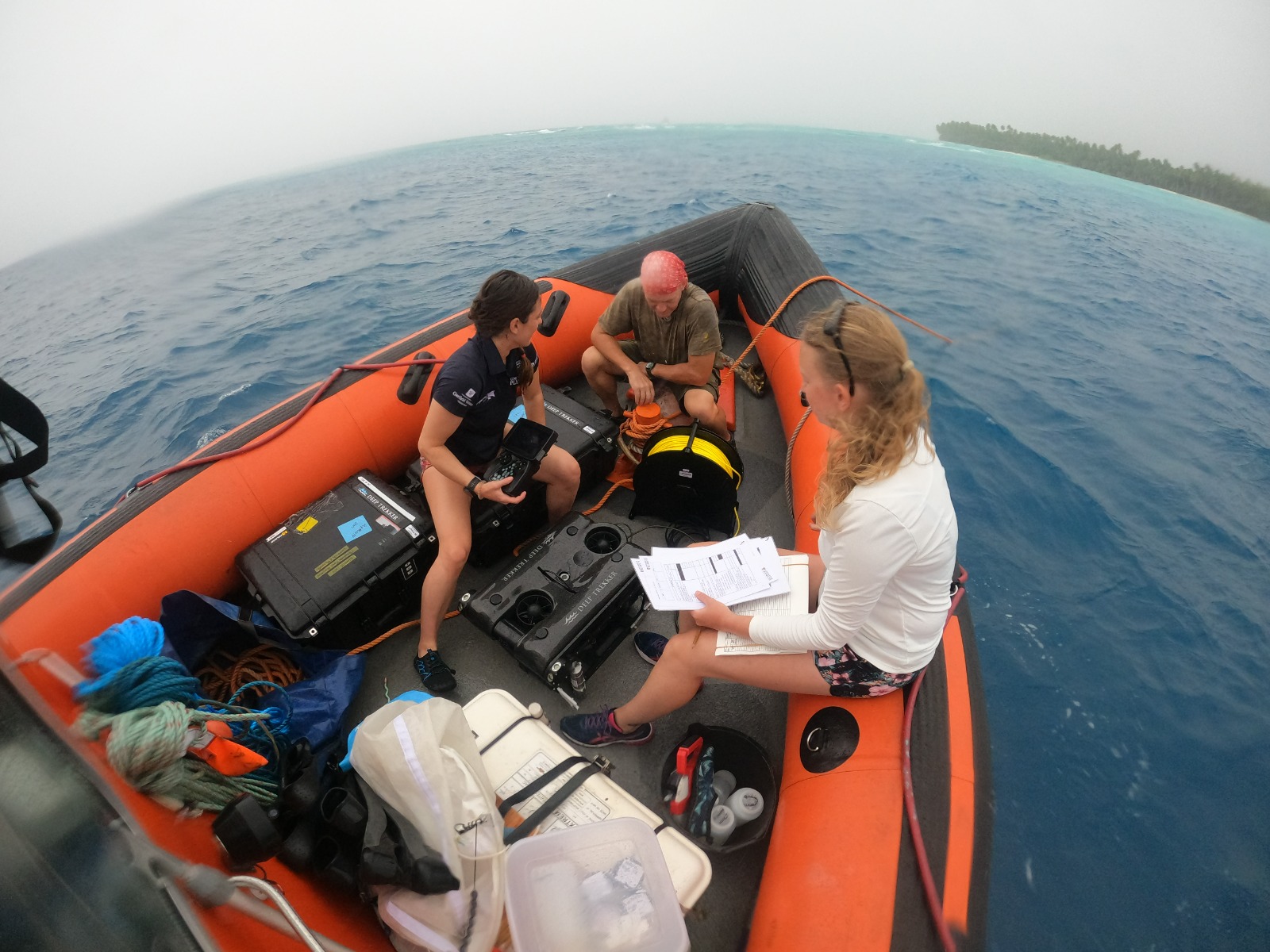
Chagos Archipelago
Your work largely takes place in the Chagos Archipelago, the island group in the Indian Ocean – why is this a significant area of interest?
- The Chagos Archipelago is one of the most remote and least disturbed coral reef regions globally. Apart from the restricted military presence on Diego Garcia, the archipelago is uninhabited and designated as a no-take marine protected area.
- Its isolation and protection status make it a valuable reference site (or a “natural laboratory”) where ecosystem changes can be attributed primarily to natural variability and global environmental change, rather than direct local anthropogenic impacts.
What key findings can you share from your work in the Chagos Archipelago?
- The MCEs of Chagos support a high level of benthic diversity, with species richness in some cases comparable to that of shallow subtropical reefs.
- Their community composition differs significantly from that of shallower reefs, indicating that MCEs are distinct ecosystems rather than subsets of shallow reef assemblages.
- These habitats appear to be widely distributed across the archipelago, predicted to occur on all atolls, islands, and submerged banks.
- Despite their depth, MCEs are not insulated from climate-driven stress. During field surveys, we recorded coral bleaching between 60–90 meters depth, even when no bleaching was observed in the shallows. Subsequent visits indicated partial recovery, suggesting some degree of resilience within these deeper coral communities.
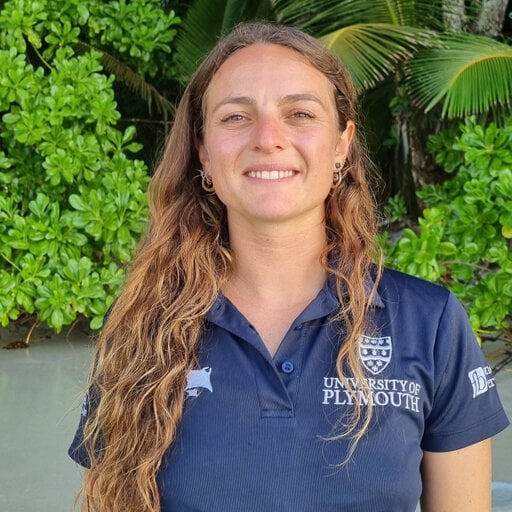
Find out more about the mission
The FAO Tanzania expedition is part of The Nansen Programme, a joint initiative of The Institute of Marine Research (IMR) in Norway and the Food and Agriculture Organization of the United Nations (FAO). Its objective was to help newly independent states improve food security by identifying resources in their seas and oceans to support the development of their fisheries.
Discover more about the participant expedition below.
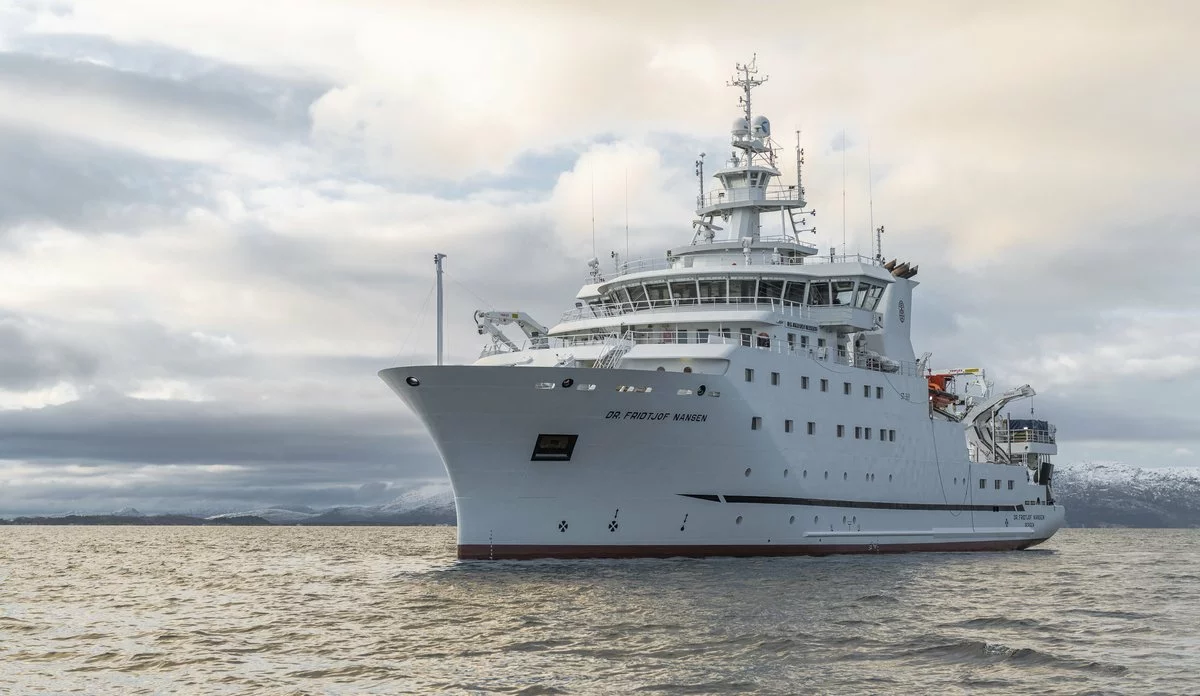
Related News
Join the census
The Ocean Census Alliance unites national and philanthropic marine institutes, museums, and universities, backed by governments, philanthropy, business and civil society partners.
